|
Me Sahyadri |
|
January 2018 |
|
Volume 5, number 1, # 55 |
|
Mysteries of Maval Caves – Karle Caves 1 |
Please use minimum 1280 pixel horizontal screen resolution for viewing. Please be patient while all the images in webpage are loaded. Please do not use the images for any commercial use without permission. Text in Marathi and English is not exact translation. Please give sufficient time to allow the photographs to load. Special thanks to all those who helped me during the compilation and for the help and guidance during the activity. |
|
|
|
|
देशाची आर्थिक प्रगती व्हावी असे सर्व नागरिकांना वाटणे सहाजिक आहे. अर्थकारणामुळे मिळणारा रोजगार, समृद्धी यासाठी सर्वांनाच आर्थिक प्रगती हवी हवीशी वाटते. आर्थिक प्रगती होताना, त्याचा दिर्घकाळात समाजावर, निसर्गावर, वातावरणावर दुष्परिणाम होणार नाही याची काळजी घेणे महत्वाचे आहे. मनुष्याच्या भावी पिढ्यांना पाणी, शुद्ध हवा, योग्य वातावरण मिळत रहावे अशी भावना मनात रुजणे महत्वाचे आहे. वाढत्या आर्थिक प्रगतीमुळे नैसर्गिक संपदेवर ताण येतो. प्रगतीसाठी प्रदुषण होते. जंगले, माळराने, व इतर अधिवास नष्ट होतात. वसुंधरेवर रहाणाऱ्या इतर जीवांचा मात्र मनुष्य फारसा विचार करत नाही. आर्थिक प्रगती करताना, मनुष्य निसर्गाची हानी करत आहे. मुळताच माणसाला निसर्गाचे महत्व समजणे हे सध्याच्या आपल्या प्रगत जीवनशैली मुळे अवघड झाले आहे. आर्थिक प्रगती, समाजाची प्रगती व निसर्ग संपदेची निगा, यांचा समतोल राखणे काळाची गरज आहे.
सह्याद्री (पश्चिम घाट) हा एक नैसर्गिक संपदेचा, वैविध्यतेचा, भौगोलिक व ऐतिहासिक ठेवा आहे. वाढत्या मानवी अतिक्रमणाचा, सह्याद्रीच्या विविध घटकांवर होणारा दुष्परिणाम भविष्यात आपल्यालाच धोका निर्माण करेल, यात शंका नाही. शुद्ध पाणी, हवा व उर्जा, भावी पिढीला मिळण्यासाठी, नंद्यांचे उगम असलेला सह्याद्री व त्याभागातील जंगले टिकवणे महत्वाचे आहे. सह्याद्रीच्या महत्वाच्या घटकांचे महत्व छायाचित्रांद्वारे प्रकट करण्याचा मी येथे प्रयत्न केला आहे. येथील पक्षी, प्राणी, वनस्पती, अधिवास, किल्ले व लेणी अशा विविध विषयांबद्दल आपण समजुन घेऊ.
|
|
As the economic development has taken the center stage, the balance between the environmental sustenance and socio economic development will be under the scanner. As most experts with balanced views have proclaimed, Indian wildlife and ecological system sustenance will be under threat, unless precautions are taken with the help of appropriate research and long term national interests. As we encounter the economic development, many habitats which indirectly or directly help sustainable development will be damaged. The awareness to gauge the success by sustainable development and not by year to year growth is a distant dream any environmentalist will assume in current scenario.
Western ghats, or Sahyadri as we all call it as, is a treasure trove of spectacular landscapes, biodiversity, flora, fauna, some amazing geological wonders and man made monuments. With the increasing pressure from human encroachment, all these elements are under stress and in turn are under depletion. Western ghats should be left untouched by human beings, to protect their future generations from getting short of resources, such as water, energy and clean air. The important elements of western ghats, which need protection are highlighted in the new version of Photo journal, Me Sahyadri Magazine. The current issue has some photographs and information about the Karle Caves as a part of series of photo essays about “mysteries of caves of Maval”, Pune district, India
|
|
|
| |
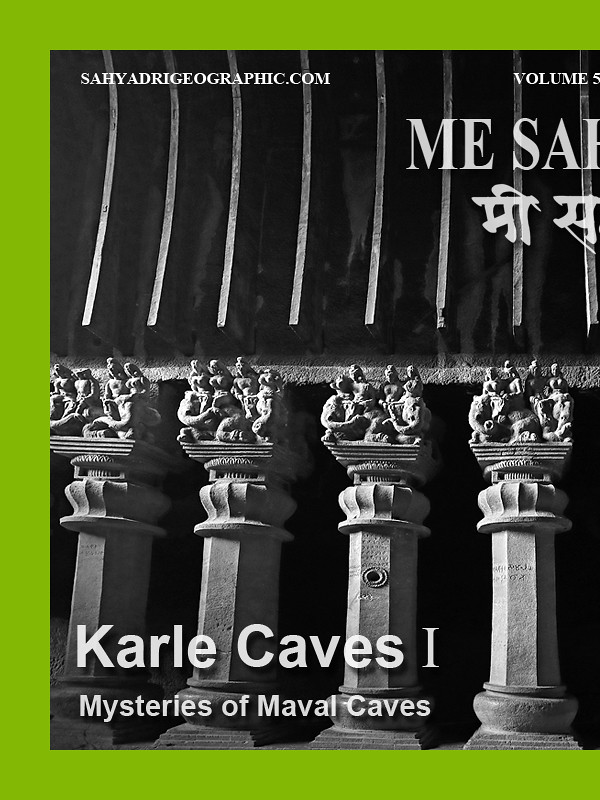 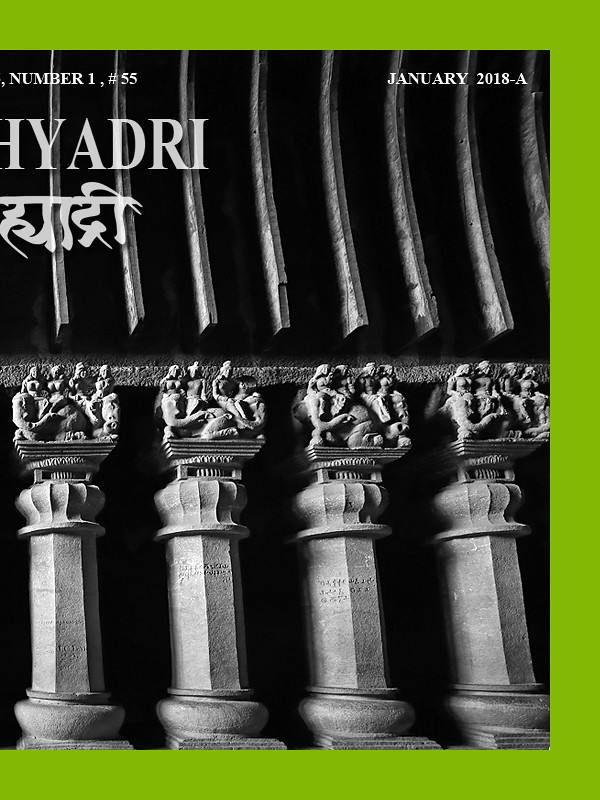
|
| |
| Me Sahyadri – January 2018 - A
|
| |
|
|
कार्ले लेणी लहानपणी पाहिल्यापासुन असंख्य प्रश्नांची मनात गर्दी झाली होती. त्यातील काही प्रश्नांची उत्तर शोधण्याचा मी प्रयत्न करायला सुरुवात केली आहे. कार्ले लेण्यातील स्तुपावर असलेल्या छत्राबद्दल मला कुतुहल होते. एवढे जुने लाकडी नाजुक छत्र, टिकले कसे ? या छत्रावर काय कोरलेले आहे ? ते कसे बनविले असावे ? असे असंख्य प्रश्न मनात होते. अखेर अनेक वर्षांनंतर, उन्हाळ्यातील एका सोनेरी दुपारी मला काही प्रश्नांची उत्तर मिळाली.
|
|
Since I visited Karle Caves in childhood, I always wondered what the umbrella over Stupa in Karle Chaityagriha is ? But never I could see what is on it, as there is always a pitch darkness on the umbrella.
It was when I studied the sun lighting of chaitya, I realised that light falls around Stupa on few summer days. It was on one summer day that I could realise what is carved on this umbrella.
|
|
|
| |
  |
| The banner has been published here to improve the awareness of the trekkers and tourists visiting the various mountain forts, mountains in north western ghats. Please avoid accidents, by following good outdoor ethics such as no swimming in cisterns at mountain forts, no rock climbing without proper technical equipment and expertise. Please do not adventure, trek with any group or individually without understanding the risks associated. The frequency of the solo trekker fatalities have increased recently. Please strictly avoid solo treks. Please also avoid treks to mountains in large commercial groups, as it leads to damage to biodiversity of these high elevation ecological islands. Please respect the wildlife and biodiversity of the region. This has become more important as the ever increasing human interference is leading to severe damage to fragile ecosystems. Please be aware of the wildlife and biodiversity of the mountains before visiting these mountains. Please follow outdoor ethics. Follow ASI and Forest department rules. The concept of use of symbols for outdoor ethics was conceived and designed by "Sahyadri Trekker Bloggers Group". |
| |
|
|
| |
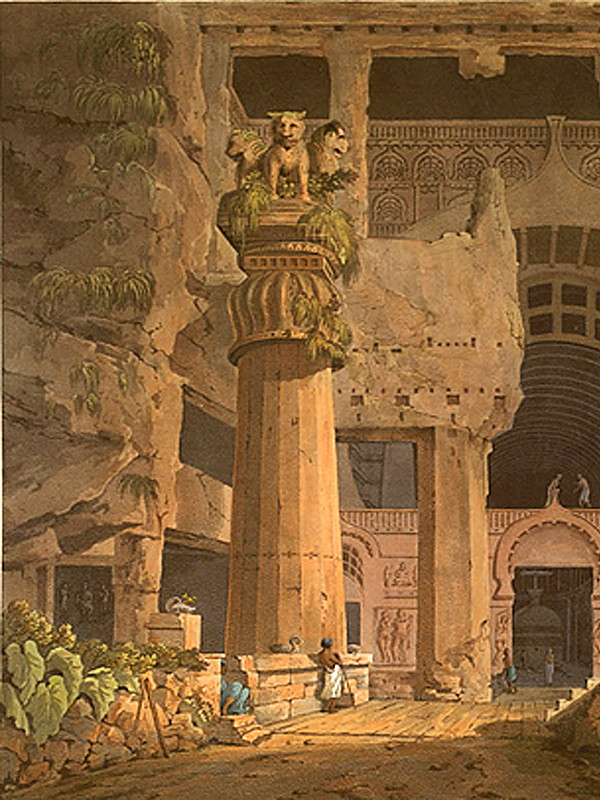 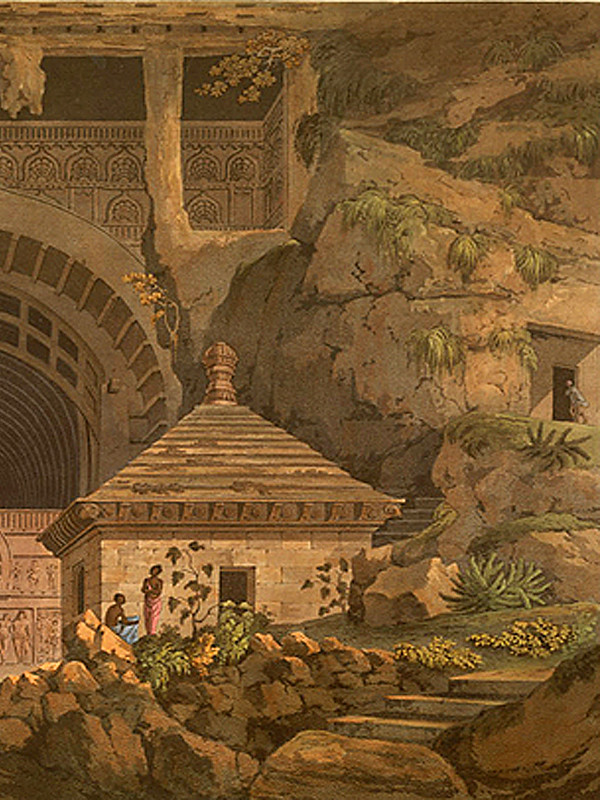 |
| |
| 1. Painting of Karle / Karle Caves by Salt, Henry (1780-1827), Maval Tehsil, Pune district, Maharashtra, India |
| |
|
|
भारतातील दगडात कोरलेली लेणी मंदिरे आश्चर्यकारक, अप्रतिम वास्तुशिल्प असलेल्या प्राचीन वास्तू आहेत. भारतातील बहुतेक लेणी बौद्ध, जैन आणि हिंदू धर्माशी संबंधित आहेत. भारतातील पूर्वेकडील महत्त्वाच्या गुंफातील एक गट बाराबर लेणींपैकी एक आहे. बाराबर लेणी इसविसन पूर्व २५२ ते २१४ काळात कोरलेली आहेत. बाराबर लेणी भारतातील सर्वात जुनी लेणी आहेत. पश्चिम भारतात, महाराष्ट्रात अजंठा, एलोरा, कार्ले, भाजे, बेडसे, कान्हेरी, एलिफंटा ,औरंगाबाद , पितळखोरा ,जुन्नर, नाशिक आणि असंख्य इतर ठिकाणी अनेक लेणी आहेत.
या लेणी प्रामुख्याने बौद्ध धर्माशी निगडीत आहेत आणि काही जैन आणि हिंदू धर्माशी निगडीत आहेत. यातील बहुतेक लेणीं इसविसन पूर्व दुसरे शतक ते इसविसन नंतर दहाव्या शतका दरम्यान कोरलेली गेली आहेत. पश्चिम भारतातील विविध लेणी गट भारताच्या इतिहासाच्या अनेक पैलूंवर प्रकाश टाकतात.
इतर समकालीन विटमाती, लाकडाच्या वास्तू काळाच्या ओघात नष्ट झाल्या आहेत. दगडात कोरलेली लेणी मात्र टिकली आहेत. शिलालेख, चित्रे, शिल्पकला, अलंकार, इत्यादी लेणी स्थापत्य तपशील इतिहासाबद्दल फार महत्वाची माहिती देतात. लेण्यांचा अभ्यास करताना त्या काळातील सामाजिक जीवन, व्यापार व्यवस्था , धर्म व्यवस्था आणि राज्य व्यवस्था इत्यादी विविध पैलूंबद्दल माहिती मिळते.
|
|
Rock cut cave temples of India are amazing architectural antiquities. Most of the caves in India are associated with Buddhism, Jainism and Hinduism. One of the most oldest important cave group in eastern India, is Barabar caves, excavated as early as 252 B.C. to 214 B.C.
In Western India, in state of Maharashtra there are several rock cut caves located at Ajantha, Ellora, Karle, Bhaje, Bedsa, Kanheri, Eliphanta, Aurangabad, Pitalkhora, Junnar, Nashik and numerous other sites. These caves mainly belong to Buddhism and few belong to Jainism and Hinduism. Most of these caves were excavated between 2nd century B.C. and 10th century A.D.
The various important cave groups in western India, throw light on several aspects of the history of India. The rock cut caves have lasted as compared to other contemporary brick and wood structures. The inscriptions, paintings, sculptures, ornamentations, architectural details at these rock cut caves give very important information about the history. The various aspects of the era when caves were excavated, such as the social life, trade, religion and kingdoms can be realised from the information available.
|
|
|
| |
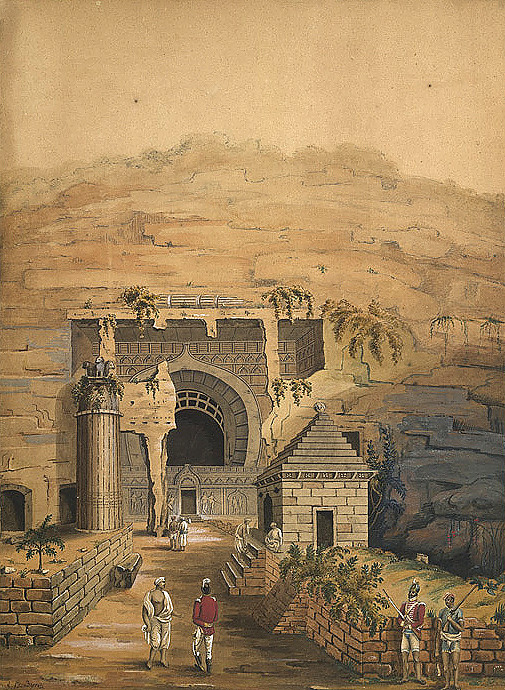 |
| |
| 2. Painting of Karle Caves by James Broff Byers , 1815, Maval Tehsil, Pune district, Maharashtra, India
|
| |
|
|
लेणी सामान्य पर्यटकांच्या मनात नेहमीच बरीच जिज्ञासा आणि उत्सुकता निर्माण करतात.
सामान्य पर्यटकांना लेणींची पद्धतशीर माहिती मिळत नाही. आपल्या वारस्या बद्दल सामान्य पर्यटकांना जागरुक करणे, अतिशय महत्वाचे आहे.
आपल्या आजच्या भारतातल्या समाजातील सकारात्मक मुल्ये यामुळे अजुन समृद्ध होण्यास मदत होईल.
भारतातील रॉक-कट आर्किटेक्चरच्या सुरुवातीच्या लेणींपैकी कार्ले एक प्रसिद्ध केंद्र आहे. कार्ले लेणी महत्वाचे बौद्ध वारसा स्मारक आहे. अजिंठा आणि एलोरा येथे कोरलेल्या लेणींच्या तुलनेत कार्ले लेणी विस्तृत नाहीत. कार्ले चैत्यगृह हे भारतातील सर्वांत मोठे चैत्यगृह आहे.
बौद्ध मंदिरास चैत्यगृह असे म्हणतात. कार्ले लेणींचा समूह १६ लेणींचा आहे. त्यातील चैत्यगृह हे सातवाहन काळात तयार झाले आहे.. (इसविसन पूर्व ६०-४० साली).
|
|
Though the caves often invoke great interest and curiosity in the mind of common visitors, today there is a lack of systematic desimination of the valuable information to the common visitor. The awareness of the common visitor about the significance of our heritage is very important for the effective affirmative enrichment of our current civilisation.
Karle is one of the most famous centres of early rock-cut architecture in India. It is important Buddhist heritage site. Compared to the rock-cut caves at Ajanta and Ellora, the Karle group of rock-cut caves is not that elaborate. However, the Chaityagriha of Karle is the grandest and the largest of all the chaitagrihas of India. Chaityagriha means Buddhist temple of worship. The group of Karle caves consists of 16 rock cut caves. Out of which cave 8 is the chaityagriha which was created during Satavahana period. (about circa 60-40 B.C.)
|
|
|
| |
 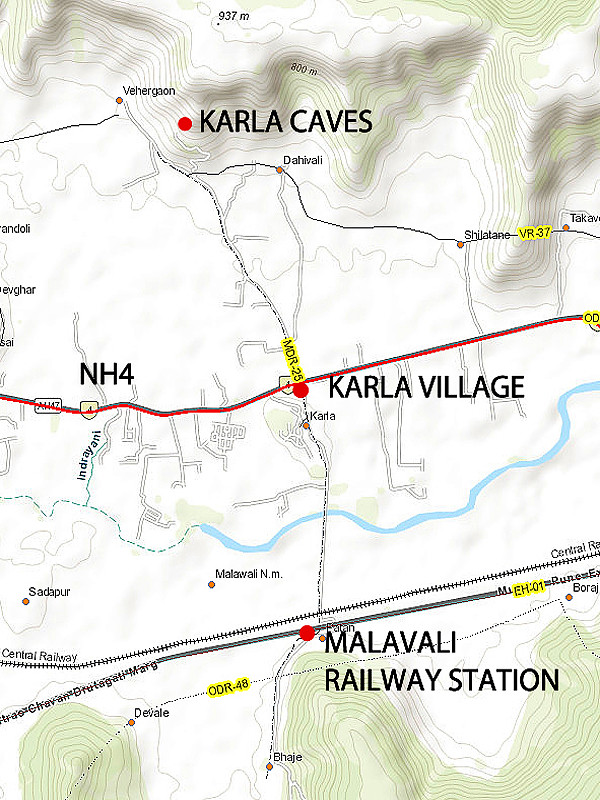 |
| |
| 3. Map 1, Pune district, Maharashtra, India |
| |
|
|
वेहेरगाव महाराष्ट्र राज्यातील पुणे जिल्ह्यातील मावळ तालुक्यातील एक गाव आहे. हे गाव दख्खनच्या पठारावरील सह्याद्री पर्वत रांगांपैकी एका डोंगर रांगेच्या पायथ्याशी आहे. पश्चिम-पूर्व दिशेने पसरलेली डोंगररांग १३ कि.मी. लांब आहे. लोणावळेच्या उत्तरेला, पश्चिम घाटापासुन, पुर्वेला असलेल्या वाळख गावापर्यंत ही 'कार्ले' डोंगररांग पसरलेली आहे. वेहेरगावाजवळ कार्ले डोंगररांगेत कार्ले लेणी आहेत. या डोंगररांगेच्या दक्षिणेला "विसापुर" रांग पसरलेली आहे. "विसापुर" डोंगररांग पश्चिम घाटातील कुरवंडे गावापासुन पुर्वेकडे असलेल्या शेलारवाडी पर्यंत ३५कि.मी. पसरलेली आहे. विसापुर डोंगररांगेत भाजे, बेडसे, पाटण, शेलारवाडी लेणी आहेत.
पुणे जिल्यातील मावळ तालुक्यात, कार्ले लेणी, पुणे - मुंबई महामार्गावर पुण्याच्या वायव्य दिशेला अंदाजे ६० कि.मी. अंतरावर आहे. कार्ले चे भौगोलिक स्थान महत्वाचे आहे. कोकणातील कल्याण आणि सोपारा बंदरांना, दक्खन च्या पठारावर वसलेल्या शहरांना जोडणाऱ्या व्यापारी मार्गावर कार्ले वसलेले आहे. कार्ले लेणीच्या जवळ इतर काही लेणी आहेत. बेडसे लेणी कार्ले लेणी पासुन अंदाजे २१ कि. मी. अंतरावर तर भाजे लेणी ८ कि. मी. अंतरावर आहेत. वेहेरगावाच्या उत्तरेकडे असलेल्या डोंगरावर पायथ्यापासुन १०० मीटर उंचीवर कार्ले लेणी कोरलेली आहेत. लेणी असलेल्या डोंगराच्या दक्षिणेकडे इंद्रायणी खोरे आहे. इंद्रायणी नदीचा उगम लोणावळे च्या जवळ होतो. भीमा नदीची उपनदी इंद्रायणी नदी पश्चिमेकडुन पुर्वेकडे वाहते. कार्ले लेणीच्या समुहात चैत्यगृह सर्वात महत्वाचे व भव्य लेणे आहे. चैत्यगृहाच्या समोर मोठे प्रांगण आहे.
|
|
Veehergaon is a village in Maval tehesil in Pune district in the state of Maharashtra in India. The village is located at the base of the one of the Sahyadri hill ranges on the Deccan plateau. Spread in west–east orientation, this hill range, which is about 13 kilometer in length, is spread from the western ghat ridge, north of Lonavala up to the village Walakh towards east. Karle caves are located in the southern scarp of this hill range. This hill range is refered as Karle range in this write up.
Further south, another west-east oriented hill range is spread over about 35 kilometer, from Kurvande at western ghat main ridge up to the Shelarwadi towards east. This hill range has important archaeological sites such as Bhaje caves, Lohgad, Visapur and Shelarwadi caves. . This hill range is refered as Visapur range in this write up. Karle is situated in Maval Taluka of Pune district on the Pune-Mumbai old highway, about 60 kilometer northwest of Pune and 11 kilometer northeast of Lonavala town. The location of Karle is important. It is on the ancient trade route connecting seaports of Kalyan and Sopara to the towns located inland on Deccan plateau. The other nearest centres of great Buddhist activity are Bhaje, which is 8 km south of Karle and Bedse, which is 21 km southeast of Karle. Karle caves are excavated at elevation of 100 metres, from base, on a high spur of the hill range on the north side of the Indrayani valley. Indrayani river originates in hills near Lonavala and flows eastward and is tributary of Bhima river. The Karle chaityagriha is the most prominent of all the excavations of Karle. There is a wide and flat open area in front of the chaityagriha.
|
|
|
| |
 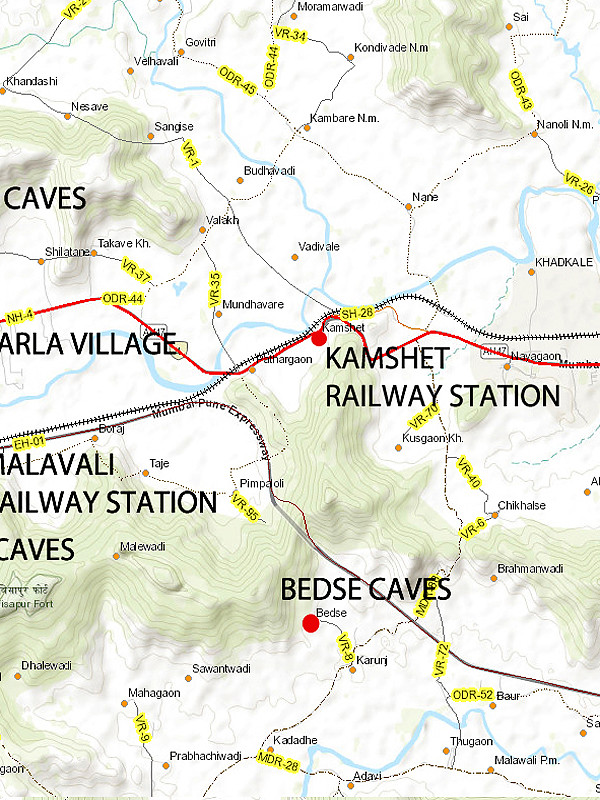 |
| |
| 4. Map 2, Pune district, Maharashtra, India |
| |
|
|
पुरातन व्यापारी मार्ग कोकणातल्या कल्याण, सोपारा या बंदरांपासुन पश्चिम घाट चढुन घाटमाथ्यावर वसलेल्या लोणावळे येथे पोहोचतो. दख्खन च्या पठारावर आल्यावर, व्यापारी मार्ग, इंद्रायणी खोऱ्यातुन पुर्वेकडे असलेल्या गावांकडे जातो. आज याच भागातुन राष्ट्रिय महामार्ग आणि रेल्वे मार्ग जातो.
|
|
The ancient trade route climbs up the western ghat ridge from the Konkan over to the Deccan plateau at Lonavala. Once atop Deccan plateau at Lonavala, the trade route is aligned parallel to Indrayani river. This ancient trade route was used to transport the goods from the eastern economic centres on the Deccan plateau to Kalyan and Sopara ports on the western coast of India. Today the modern Mumbai-Pune road and Central railway line passes through the same Indrayani river basin, which was used for ancient trade in the past.
|
|
|
| |
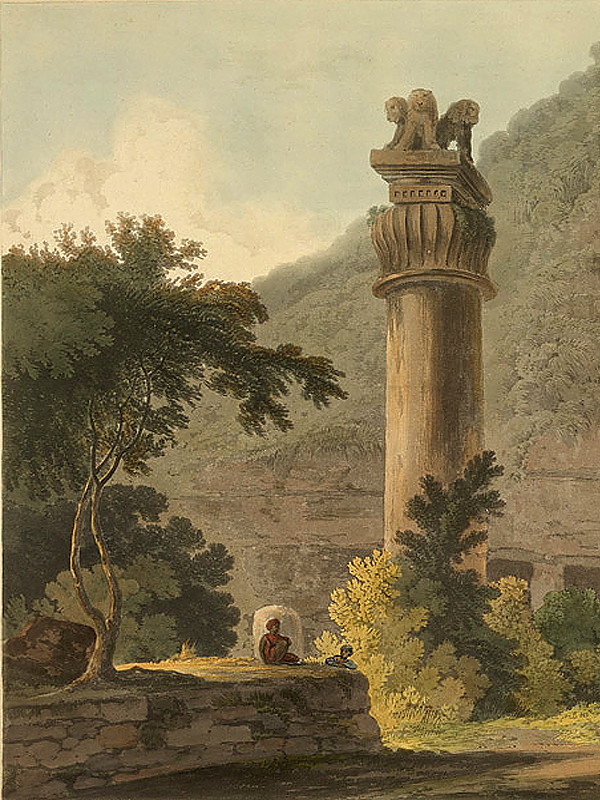 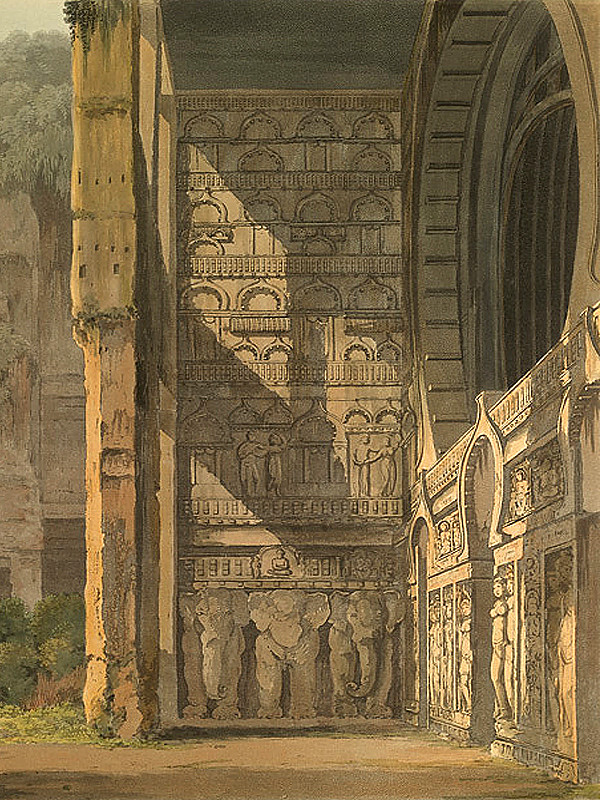 |
| |
| 5. Painting of Karle / Karle caves by James Wales, December 1792, Maval Tehsil, Pune district, Maharashtra, India
|
| |
|
|
कार्ले लेणी इसविसन पुर्व ६०-४० साल ते इसविसन नंतर चौथ्या शतक या काळात कोरेलेली आहेत. कार्ले लेणी मुख्यत्वे हिनायन काळात कोरेलेली आहेत. परंतु नंतरच्या महायान काळात काही शिल्पांचे काम येथे झालेले दिसते. लेण्यांचे काम करण्यासाठी त्या काळातील समाजातील विविध घटकांनी आर्थिक मदत केल्याचे येथील शिलालेखांमध्ये नमुद केलेले आहे. व्यापारी, व्यापारी संघ, महारथी युवराज, भिक्षुक, अनुयायी स्त्री पुरुष यांचा उल्लेख येथे देणगीदार म्हणुन आढळतो. समाजातील सर्व स्तरांतील लोकांचा मठाच्या कामात सहभाग दिसुन येतो.
|
|
The Buddhist monasteries at Karle can be datable between circa 60-40 B.C. and 4th century A.D. Except from few excavations of Mahayana phase the remaining excavations mainly belong to the Hinayana phase. The caves were formed from the donations and support of a group of individuals, such as merchants and merchant groups; the prince of Maharathi family; bhikhus and devotees including men and women. Persons from every strata of the society contributed towards the establishment of this monastery, indicating its importance in the Buddhist world.
|
|
|
| |
 |
| |
| 6. Karle Chaityagriha in past, illustration from Hutchinson’s Story of Nations, Maval Tehsil, Pune district, Maharashtra, India |
| |
|
|
कार्ले लेण्यात ३७ शिलालेख आहेत. या शिलालेखांत विविध ५० व्यक्तींच्या नावांचा उल्लेख आहे. या व्यक्तींच्या गावांचा उल्लेख शिलालेखांत आहे. वेजमती (बनवासी, उत्तर कनरा जिल्हा, कार्ले च्या ६०० किमी दक्षिणेकडे), सोपारा (कार्ले च्या १०० किमी पश्चिमेकडे), करजका, अद्याप ठावा न लागलेल्या धेनुकाकटा, आणि उमेहनकाकटा या गावांचा शिलालेखांमध्ये उल्लेख आढळतो. धेनुकाकटा या गावातील यवन (ग्रीक) देणगीदारांनी दिलेल्या देणग्यांची संख्या जास्त आहे. उसवदत्त आणि वसिष्ठिपुत्र पुलमावी यांच्या देणग्यांमध्ये वलुरक संघाचा उल्लेख आढळतो. तर एका शिलालेखात " पुलमावी राज्यस्थापनेपासुन चोवीसावे वर्ष" म्हणजे अंदाजे इसविसनानंतर १५४ वे वर्ष असा काळाचा उल्लेख आढळतो. शिलालेखातील वर्णनानुसार कार्ले लेण्यांचे जुने नाव "वलुरक" आहे असे निष्पन्न होते.
|
|
There are about 37 inscriptions found here. Inscriptions clearly speak of about 50 individuals from various places like Vejamati (Banavasi, north Kanara district, nearly 600 km south of Karle); Sopara (nearly 100 km northwest of Karle) and unidentified towns of Umehanakata and Dhenukakata, Gonekakasa, Karajaka and river Banasa. Most of the donors from Dhenukakata were Yavanas (Greeks). The inscriptions of Usavadata and Vasisthiputra Pulumavi mention donation of land to the Veluraka Samgha. The inscription of Pulumavi is dated in his 24th year of his reign (A.D. 154). The inscriptions thus give the ancient name of Karle as ‘Valuraka’. There is a mention of 12 places in the inscriptions of which few are known today.
|
|
|
| |
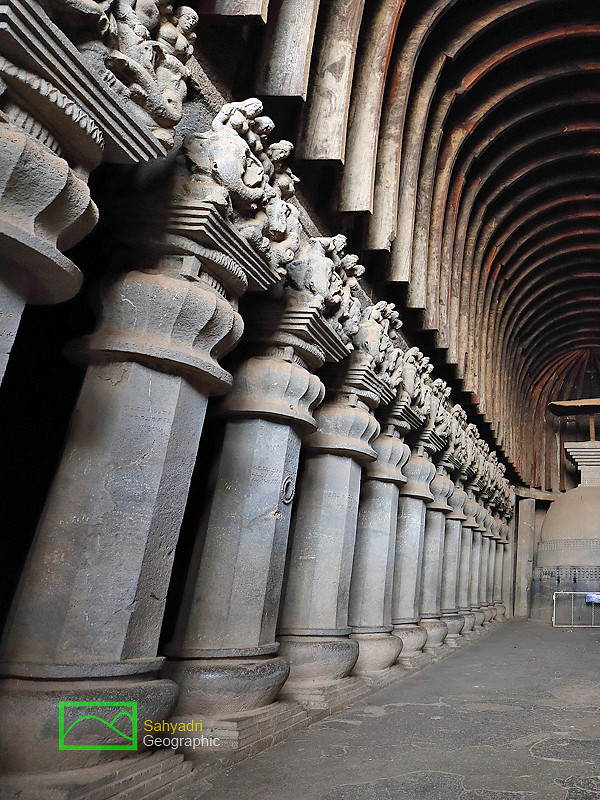 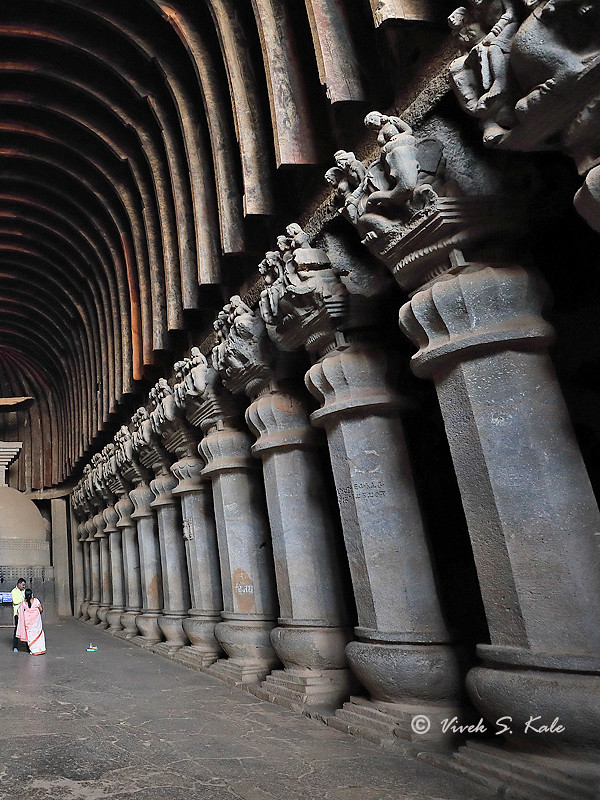 |
| |
| 7. Karle Chaityagriha, Maval Tehsil, Pune district, Maharashtra, India |
| |
|
|
कार्ले येथील चैत्यगृह भारतातील सर्वात भव्य व अप्रतिम चैत्यगृह आहे. चैत्यगृहाची लांबी दरवाजापासुन मागच्या भिंतीपर्यंत ३७.८ मीटर आहे. चैत्यगृहाची रुंदी १३.८ मीटर आहे. चैत्यगृहाची उंची १४ मीटर आहे. छत अर्धवर्तुळाकार आकाराचे आहे. चैत्यगृह खांबांमुळे दोन भागात विभागलेले आहे. खांबांच्या मागचा भाग आणि खांबांसमोरचा मुख्य भाग असे दोन भाग आहेत. डावीकडची आणि उजवीकडची खांबाची रांग स्तुपाच्या मागे अर्धवर्तुळात एकमेकांना मिळते.
|
|
The chaityagriha at Karle is the biggest of its type in the whole of India. The hall measures 37.87 m deep from door to back. It is 13.87 m wide and 14.02 m high. This chaitya consists of an apsidal hall with a front verandah. The apsidal means the semicircular recess roof. The hall is divided into a nave (central open space) and two aisles (passages) by two rows of pillars. The two rows of pillars meet at the rear behind the stupa in a semicircle forming the semicircular recess.
|
|
|
| |
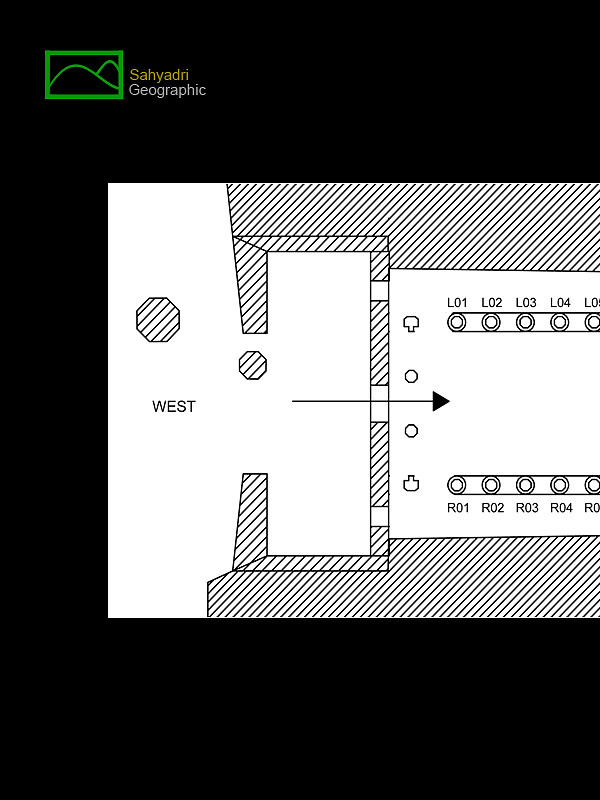 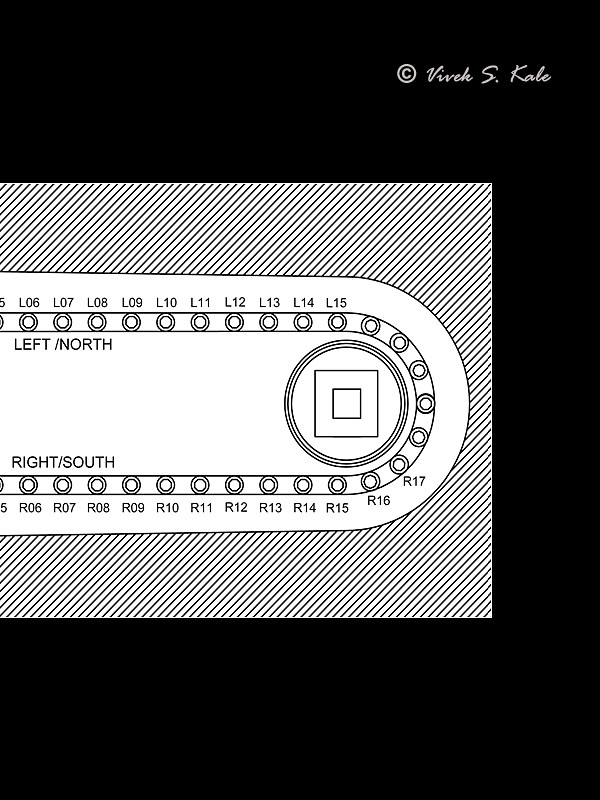 |
| |
| 8. Karle Chaityagriha, Maval Tehsil, Pune district, Maharashtra, India |
| |
|
|
चैत्यगृहातले कोरलेले खांब अप्रतिम आहेत. खांबाच्या सर्वात खाली तीन चौकटी आहेत. चौकटींवर खांबांना अर्ध गोल माठासारखा आकार दिला आहे. त्याच्यावरचा खांब अष्ट्कोनी आहे. वरच्या भागात पाकळ्या असलेल्या कमळाचा आकार आहे. त्यावर असलेल्या चौकटींवर हत्ती, घोडे व इतर प्राण्यांवर आरुढ मानवी शिल्पे आहेत. खांबांच्या वर पुढे व मागे दोन्ही बाजुस मानवी शिल्पे आहेत. पुढच्या भागात हत्तीवर आरुढ शिल्पे आहेत, मागच्या बाजुस मानवी शिल्पे हत्ती, घोडे, आणि सेंटॉर/स्फिंक्स वर आरुढ आहेत. एकुण मिळुन ४१ खांब आहेत. दरवाज्याच्या जवळचे सज्जाच्या खालचे चार खांब अष्ट्कोनी नाहीत. इतर सर्व खांब अष्टकोनी आहेत. स्तुपाच्या जवळच्या सात अष्टकोनी खांबांवर शिल्पे नाहीत.
|
|
The pillars are executed with the great ingenuity which reflect the sculptural art of the period. The pillars consist of a stepped base surmounted by a pot, octagonal shaft over it, the capital of inverted flower vase member, caged amalaka and an inverted stepped pyramid. Above this inverted stepped pyramid there are sculptures of animals with human riders, facing both aisle and main hall. The animals on the capital consist of elephants, horses and centaurs/sphinx like mythological animals. Centaurs are greek mythological animals with human face on horse body. There are total 41 pillars in Chaitya griha. The four pillars parallel to front wall near the entrance are non octagonal and support the beam. There are seven pillars around Stupa which are octagonal but without sculptures atop.
|
|
|
| |
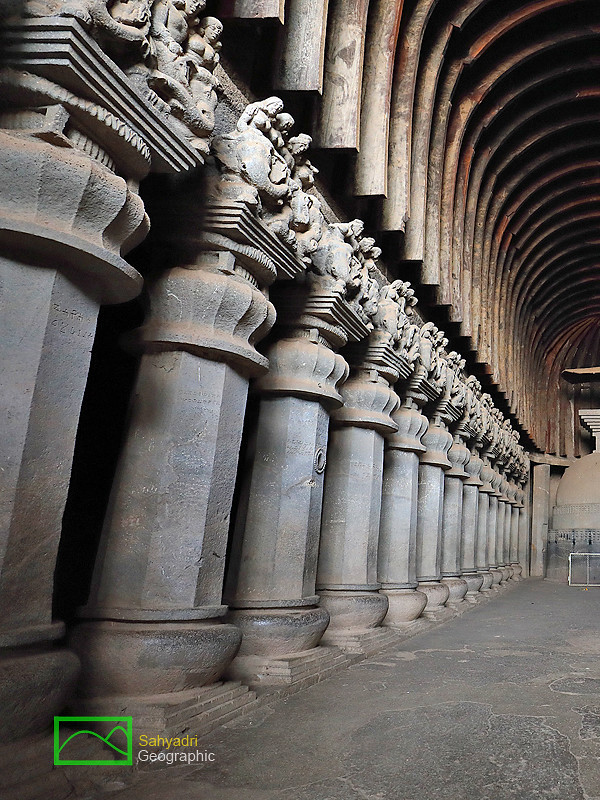 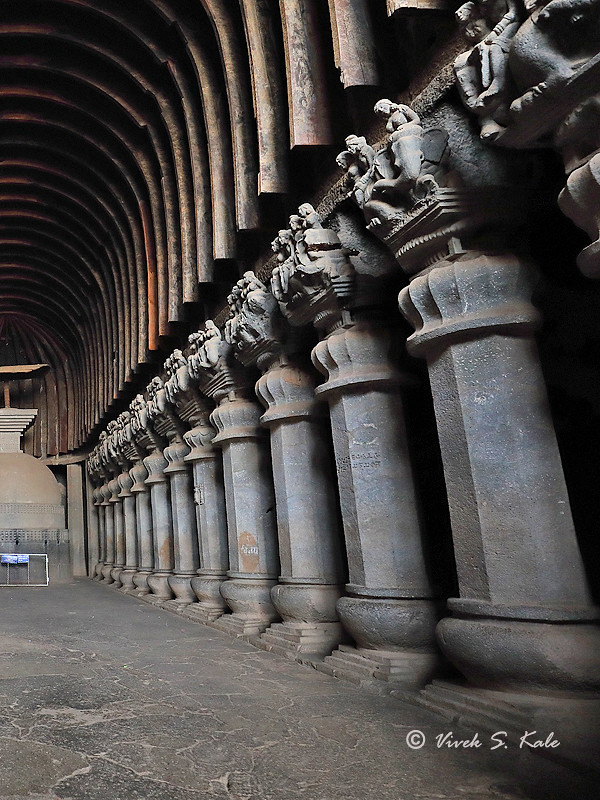 |
| |
| 9. Karle Chaityagriha, Maval Tehsil, Pune district, Maharashtra, India |
| |
|
|
चैत्यगृहाचे छत अर्धवर्तुळाकार आहे. छताला लाकडी फासळ्या आणि वासे आहेत. एखाद्या लाकडी वास्तुला जशी संरचना असते त्या पद्धतीने या फासळ्या आणि वासे लावलेले आहेत. ही रचना निव्वळ जमिनीवरच्या बांधलेल्या चैत्यगृहाची नक्कल असावी. लाकडी फासळ्यांमुळे छताला आधार मिळाल्याचा आभास निर्माण केलेला आहे. चैत्यगृहातील मुख्य पुजेची वस्तु म्हणजे येथे असलेला महा स्तुप होय. दोन वेगवेगळ्या व्यासाचे दंडगोलाकार स्तुपात पहायला मिळतात. दंडगोलाकार भागावर अंडाकार असलेला भाग आहे. त्यावर चौकटी असलेली हर्मिका आहे. हर्मिकेवर लाकडी यष्टीवर लाकडी छत्र आहे.
|
|
The semicircular roof is fitted with wooden curved ribs and longitudinal beams. The main object of worship is the monolithic stupa at the rear (east) end of the chaityagriha. The stupa consists of a cylindrical block rising in two stages. There is a hemispherical dome over the cylindrical block. On the top of the hemispherical dome there is a cubical Harmika and a stepped inverted square pyramid over it. Over the pyramid is placed a wooden chhatri (Umbrella) with a yashti (shaft) through a hole pierced into it.
|
|
|
| |
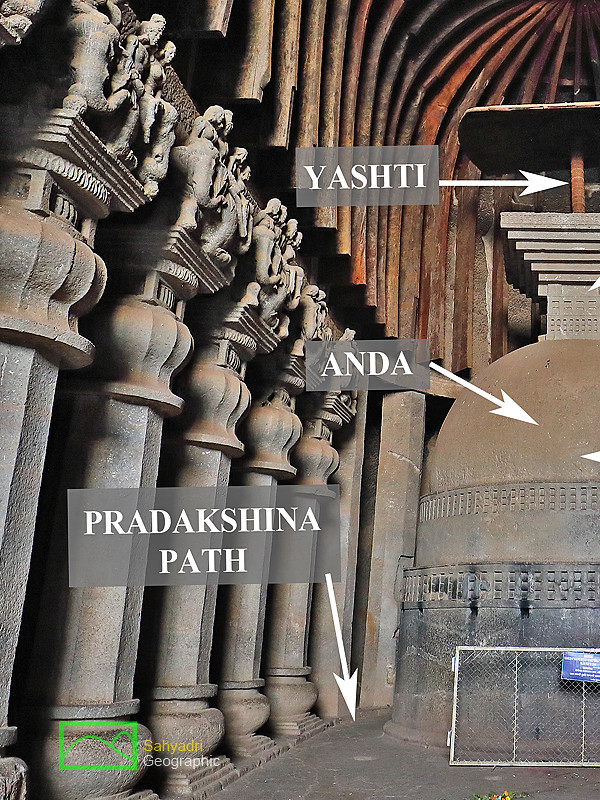  |
| |
| 10, Stupa, Karle Chaityagriha, Maval Tehsil, Pune district, Maharashtra, India |
| |
|
|
चैत्यगृहात प्रवेश करण्यासाठी तीन दरवाजे आहेत. मधे असलेल्या प्रमुख द्वारातुन, स्तुपासमोर असलेल्या मोकळ्या भागात प्रवेश घेता येतो. चैत्यगृहाच्या पडवीमध्ये समोरच्या आणि बाजुच्या भिंतींवर मिथुन चित्रे कोरलेली आहेत. समोरच्या मुख्य भिंतीवर दोन भागात शिल्प कोरलेली आहेत. खालच्या स्तरावर, वेदिका रचना कोरलेली आहे. वरच्या स्तरावर मिथुन मानवी शिल्पे (स्त्री पुरुष जोड़्या) कोरलेली आहेत. दरवाजांच्या वरच्या भागात मुख्य भिंतीवर लहान चैत्य गवाक्ष (खिडक्या) कोरलेली आहेत. या लहान गवाक्षांबरोबर वेदिका संरचना येथे कोरलेली आढळते.
|
|
The chaityagriha is entered through a front wall, which has three entrances, the central one opening into the nave and the other two, into the side aisles, behind the pillars. The side walls of the verandah, front wall and inner face of the screen wall are extensively decorated with sculptures. The front wall of the verandah is decorated which is executed in two parts. The lower portion consists of a row of railing pattern and above which is six Mithunaa figures (pair of male and female figures) rising up to the level of the lintels. The portion above the doorways is decorated with a series of miniature chaitya windows imitating the huge chaita window. These miniature windows are connected through a vedika (rail pattern) and a roll cornice. This pattern extends throughout the entire width of the facade of the hall.
|
|
|
| |
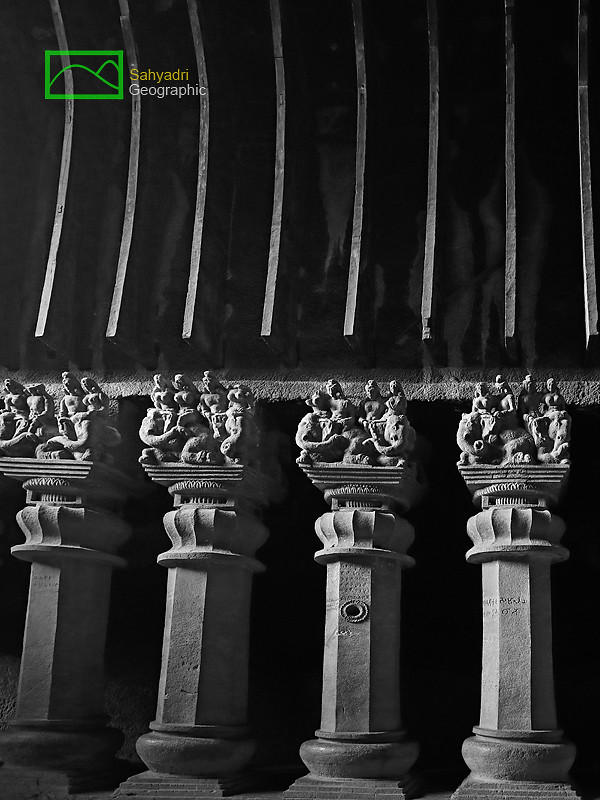 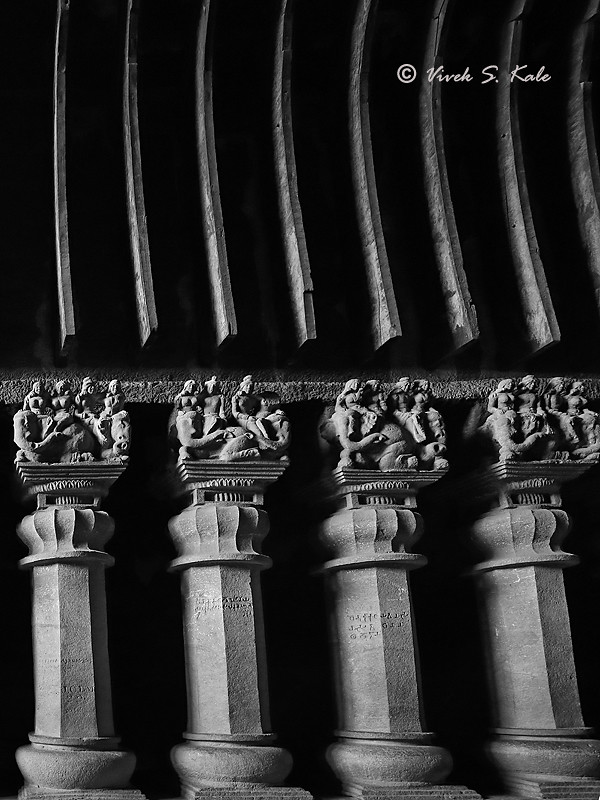 |
| |
| 11. Pillars with Capitals, Karle Chaityagriha, Maval Tehsil, Pune district, Maharashtra, India |
| |
|
|
चैत्यगृहाच्या मुख्य भिंतीवर मुख्य द्वाराच्या वर एक मोठे गवाक्ष (खिडकी) आहे. या मुख्य गवाक्षातुन स्तुपावर आणि चैत्यगृहातील मोकळ्या जागेत प्रकाश पडतो. चैत्यगृहाचे मुख्य द्वार पश्चिम मुखी आहे. सकाळच्या वेळी मंद प्रकाश या गवाक्षातुन आत येतो. तर सुर्यास्तापुर्वी दुपारी सुर्यप्रकाश गवाक्षातुन थेट चैत्यगृहात येतो. चैत्यगृहाच्या प्रांगणात भव्य सोळाकोनी खांब आहे. या खांबावर चार सिंह कोरलेले आहेत. असाच सिंहस्तंभ दुसऱ्या बाजुला असावा असा अंगाज बांधला जातो. कान्हेरी येथील चैत्यगृहाबाहेर सुद्धा असे दोन सिंहस्तंभ पहावयास मिळतात. कार्ले च्या सिंहस्तंभावर शिलालेख कोरलेला आहे.
|
|
There is a huge chaitya window in the front wall of the Cahityagriha. The huge chaitya window provides good light source to lit the stupa and the pillars of the grand chaityagriha. The Chaitygriha faces west. There is indirect diffused light in Chaityagriha in the morning and direct sunlight enters the Chaityagriha in the afternoon.
The chaityagriha at Karle is also unique as it is one among the two chaityagrihas in western Deccan which has huge lion pillars in front. The other chaityagriha with lion pillars in front is at Kanheri, in Mumbai. This pillar is of the Ashokan type with a huge sixteen sided shaft rising over a platform. The shaft is surmounted by an inverted bell member followed by flat surface and inverted stepped pyramidal plates. Four back to back placed lions are at the top of this pillar. This pillar is located to the north side of the chaityagriha entrance. Similar pillar may have existed on other side.
|
|
|
| |
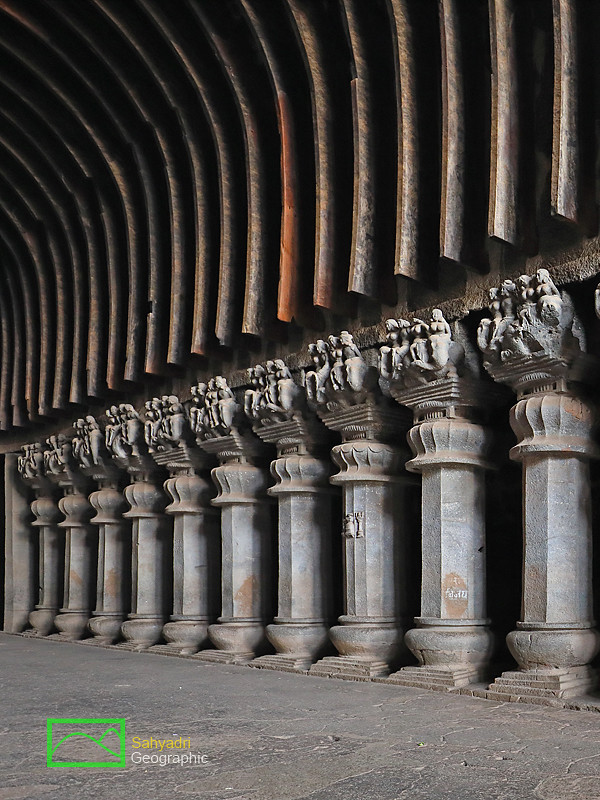 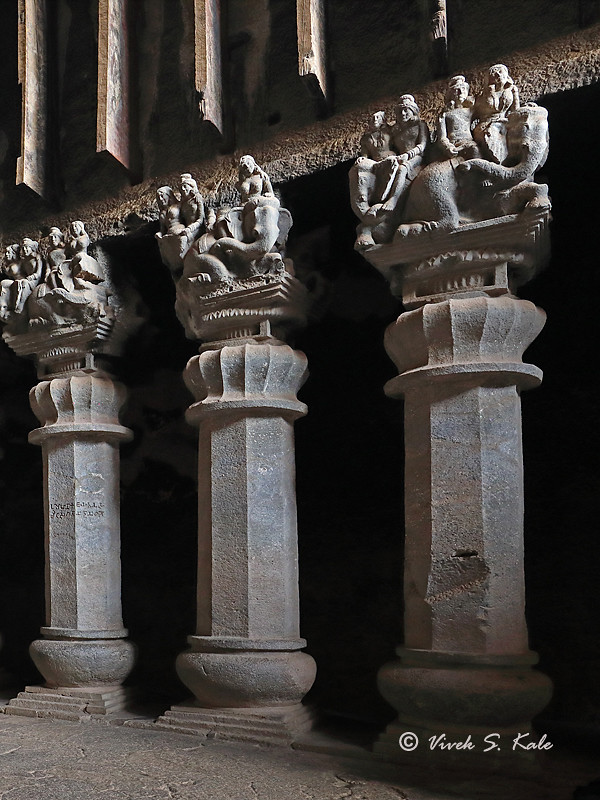 |
| |
| 12. Pillars with Capitals, Karle Chaityagriha, Maval Tehsil, Pune district, Maharashtra, India |
| |
|
|
कार्ले लेणीतील प्रमुख महत्वाचे पैलू :
१. भारतातील सर्वात मोठे आणि सर्वात नेत्रदीपक चैत्यगृह
२. सुमारे 60-40 इ.स.पू. आणि चौथ्या शतकाच्या दरम्यान बनविले.
३. हिनायन आणि महायान वास्तुकला
४. चैत्यगृहातील प्राचीन लाकडी काम (सुमारे २०५० वर्षे जुने)
५. ब्राह्मी लिपीतील एकूण 37 पाली शिलालेख.
६. शिलालेखांमध्ये सातवाहन राजा वसिष्टीपुत्र पुलमवी यांचे उल्लेख.
७. शिलालेखात क्षत्रप राजा नहापान आणि उसवदत्त (नहापनाचा जावई) यांचा उल्लेख
८. शिलालेखात कल्याण व सोपारा बंदरांचा उल्लेख.
९. शिलालेखात धेनुकाकट गावातल्या ग्रीक देणगीदारांचा उल्लेख.
१०. शिलालेखात अबुलामा प्रांतातल्या पर्शियन हरफरण आणि सेतफरण या व्यक्तींचा उल्लेख
११. चैत्यगृहाबाहेर प्रांगणात असलेला विशाल सिंहस्तभ
१२. चैत्यगृहाच्या आवारातली मिथुन शिल्पे
१३. शिलालेखात काळाचा उल्लेख
. |
|
Top Salient Aspects of Karle Caves
1. The largest and the most spectacular Chaityagriha of India.
2. Datable between circa 60-40 BC and 4th century AD.
3. The caves with both Hinayana and Mahayana architecture.
4. Ancient wooden ribs, yashti and chattri in Chaityagriha (about 2050 years old).
5. Total 37 pali inscriptions , in Brahmi script.
6. Mention of Satvahana king Vasisthiputra Pulumavi in the inscriptions.
7. Mention of Saka warrior Usavadata (son in law of King Nahapana) in one of the inscriptions.
8. Mention of Kalyan and Sopara ports in inscriptions.
9. Mention of several greek donors from unknown place called as Dhenukakata in inscriptions.
10. Mention of Harapharana and Setapharana (Persian names) from Abulama in inscription.
11. Huge Ashokan Lion pillar with four lions atop.
12. Mithuna sculptures inside and outside the chaityagriha.
13. Mention of the time references in few inscriptions.
|
|
|
| |
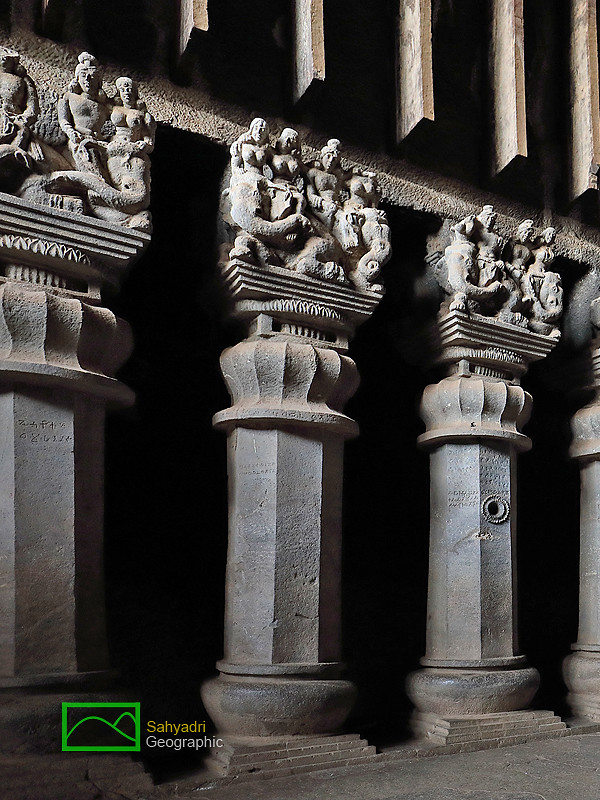 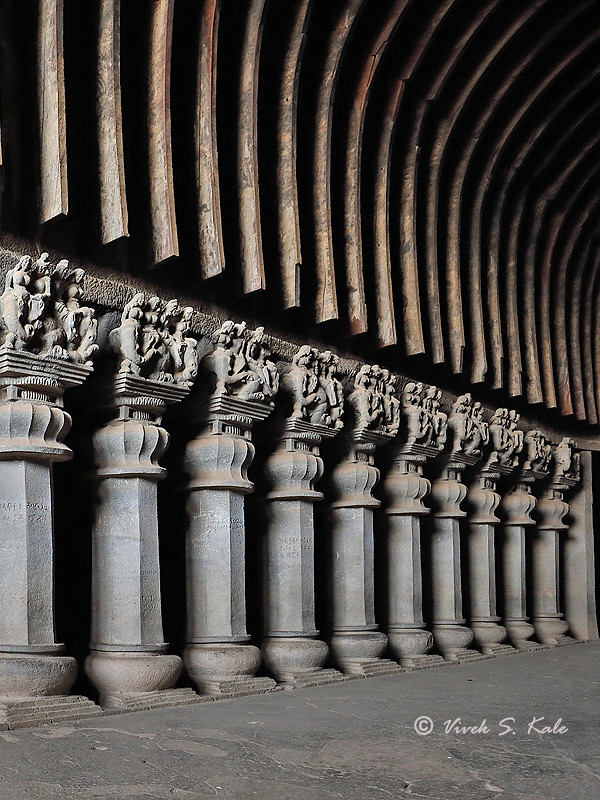 |
| |
| 13. Pillars with Capitals, Karle Chaityagriha, Maval Tehsil, Pune district, Maharashtra, India |
| |
|
|
कार्ले लेणीतील पाहण्यासाठी महत्त्वाच्या गोष्टी :
१. भारतातील सर्वात मोठे आणि सर्वात नेत्रदीपक चैत्यगृह
२. हिंदू देवता एकविरा मंदिर.
३. हिनायन आणि महायान वास्तुकला
४. चैत्यगृहातील प्राचीन लाकडी काम (सुमारे २०५० वर्षे जुने)
५. ब्राह्मी लिपीतील एकूण 37 पाली शिलालेख.
६. शिलालेखांमध्ये सातवाहन राजा वसिष्टीपुत्र पुलमवी यांचे उल्लेख.
७. शिलालेखात क्षत्रप राजा नहापान आणि उसवदत्त (नहापनाचा जावई) यांचा उल्लेख
८. शिलालेखात कल्याण व सोपारा बंदरांचा उल्लेख.
९. शिलालेखात धेनुकाकट गावातल्या ग्रीक देणगीदारांचा उल्लेख.
१०. शिलालेखात अबुलामा प्रांतातल्या पर्शियन हरफरण आणि सेतफरण या व्यक्तींचा उल्लेख
११. चैत्यगृहाबाहेर प्रांगणात असलेला विशाल सिंहस्तभ
१२. चैत्यगृहाच्या आवारातली शिल्पे
१३. चैत्यगृहातील मिथुन शिल्पे
१४. प्राचीन पारंपारिक वेषभूषा आणि दागिने
१५. स्तूप संदर्भात कोळी जमातीची परंपरा
|
|
Top Important things to see at Karle Caves:
1. The largest and the most spectacular Chaityagriha of India.
2. Temple of Hindu godess Ekvira.
3. The caves with both Hinayana andMahayana architecture.
4. Ancient wooden ribs, yashti and chattri in Chaityagriha (about 2050 years old).
5. Total 37 pali inscriptions , in Brahmi script with legebility.
6. Mention of Satvahana king Vasisthiputra Pulumavi in one of the inscriptions.
7. Mention of Saka warrior Usavadata (son in law of King Nahapana) in one of the inscriptions.
8. Mention of Kalyan ,Sopara and other 10 locations in inscriptions.
9. Mention of several greek donors from unknown place called as Dhenukakata.
10. Mention of Harapharana and Setapharana (Persian names) from Abulama.
11. Huge Ashokan Lion pillar with four lions atop.
12. Traditions of Koli tribe with respect to Stupa.
13. Symbols in chaityagriha.
14. The sculptures in verandah of the chaityagriha.
15. The ancient traditional dress and ornaments on the various men and women in sculptures.
16. Mithuna sculptures inside and outside the chaityagriha.
|
|
|
| |
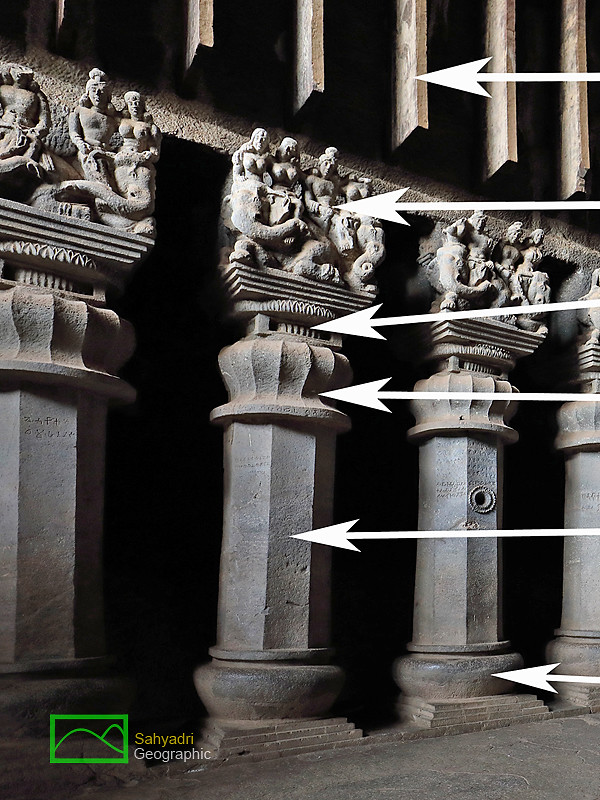 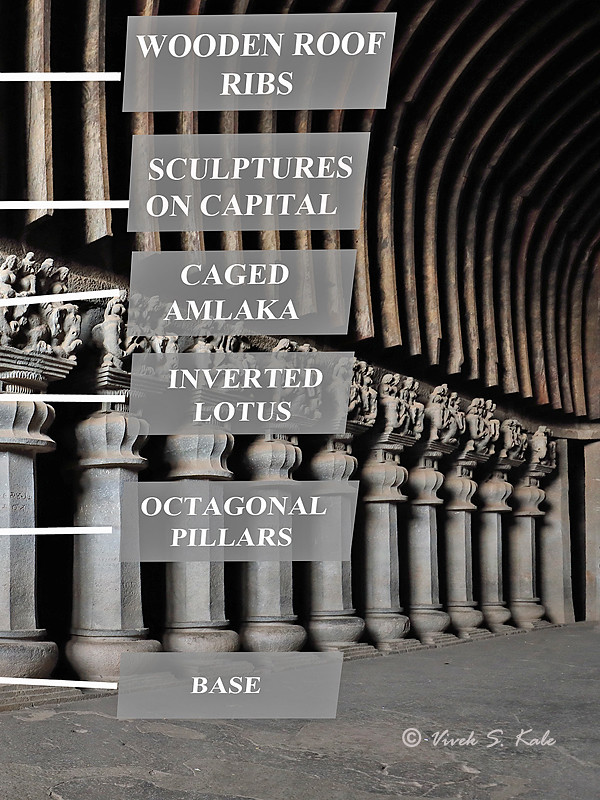 |
| |
| 14. Pillars with Capitals, Karle Chaityagriha, Maval Tehsil, Pune district, Maharashtra, India |
| |
|
|
कार्ले लेणी समुहामध्ये असलेल्या १५ लेण्यांचा तपशिल :
लेणे १ : डोंगराच्या दक्षिण टोकाला एक पाण्याचे टाके आणि एक बाक असलेला विहार आहे.
लेणे २ : लेणे १ च्या पश्चिमेला, एक बाक असलेला विहार, येथे एक भिक्षुकाने देणगी दिल्याचा उल्लेख असलेला शिलालेख आहे.
लेणे ३ : अर्धवट काम केलेला विहार
लेणे ४ : लेणे ३ च्या उत्तरेला एक मोठा विहार. या लेण्यात भगवान गौतम बुद्धाचे शिल्प आहे.
लेणे ५ : लेणे ४ च्या पश्चिमेला असलेले एक पाण्याचे टाके
लेणे ६ : पाण्याच्या टाक्याजवळ भगवान गौतम बुद्धाचे शिल्प असलेले लहान लेणे
लेणे ७ : चैत्यगृहाच्या जवळ दक्षिणेला असलेले लेणे
लेणे ८ : चैत्यगृह
|
|
Karle is a cave group consisting of 15 excavations. The is one of the most important cave group in western India mainly due to its magnificent Chaityagriha.
Cave 1 : On south end of the hill, there is a water cistern and single celled cave with a simple bench.
Cave 2 : West of Cave 1 there is another single celled cave with a bench. There is an inscription in this cave that this is a gift by a monk.
Cave 3 : This is an unfinished cave at the south end.
Cave 4: North of Cave 3, this is a hall with a relief figure of a seated Buddha opposite the central doorway.
Excavation 5 : West if Cave 4, there is a broken water cistern
Cave 6 : Near the water cistern there is a small cell with its front broken, with a Buddha figure carved at the back.
Cave 7: Close to Chaityagriha on south side this is a hall.
Cave 8 : This is a great Chaitya griha.
|
|
|
| |
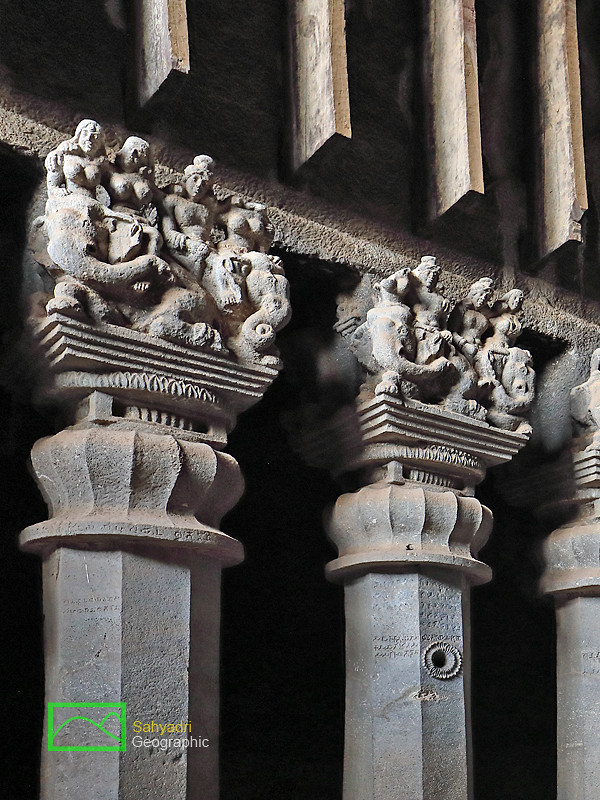 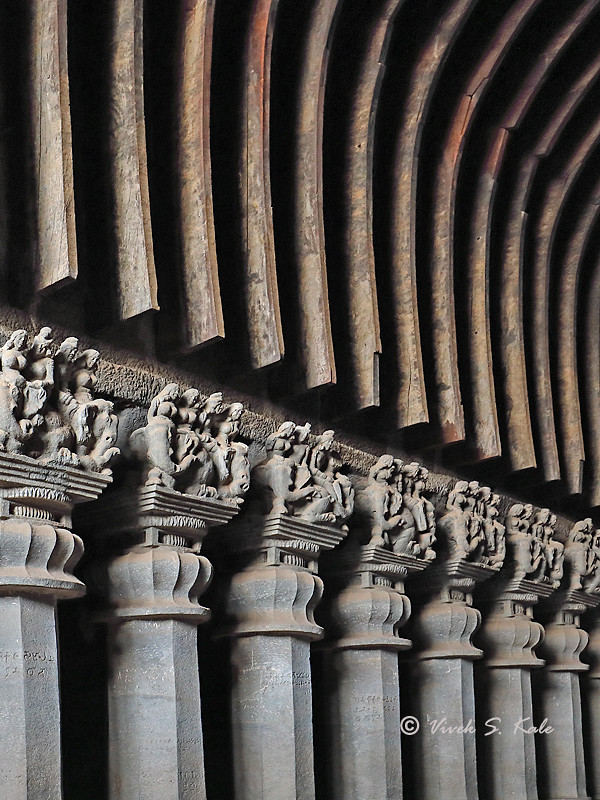 |
| |
| 15. Pillars with Capitals, Karle Chaityagriha, Maval Tehsil, Pune district, Maharashtra, India |
| |
|
|
कार्ले लेणी समुहामध्ये असलेल्या १५ लेण्यांचा तपशिल :
लेणे ९ : सिंहस्तंभाच्या उत्तरेस चैत्यगृहाबाहेर असलेले तुटलेले लेणे
लेणे १० : लेणे ९ बाहेरचे पाण्याचे टाके
लेणे ११ : लेणे १० च्या उत्तरेस असलेले, मोठी गुहा (छतावर अर्धगोल आकार)
लेणे १२ : मोठी गुहा, येथे एक शिलालेख आहे.
लेणे १३ : लेणे ११ मधुन वर जिन्याने जाता येईल असे लेणे, येथे चार विहार आहेत.
लेणे १४ : लेणे १३ च्या वर असलेले लेणे, येथे भिंतीवर दोन बुद्ध शिल्पे आहेत.
लेणे १५ : लेणे १३ च्या बाजुचे लेणे. येथे १ गृह आणि ८ विहार आहेत. येथे शिलालेख आहे.
|
|
Cave 9 : North of lion pillar in front of the chaitya griha there is a ruined cave.
Excavation 10 : There is a large open water cistern infront of the cave 9.
Excavation 11: Further north there is a large cavern with traces of Stupa in rock ceiling.
Cave 12 : This is another large open cavern. This is in ruins. There is an inscription of the donation of cave by Bhikshukis.
Cave 13 : This is acessible by stairway from cave 11 and is on the first floor. It has large hall with 4 cells.
Cave 14 : This is above cell 13 and is accessible from one of the rooms in cave 13. There are 2 buddha figures on the wall.
Cave 15 : This is cave next to cave 13 with one hall and 8 cells. There is an inscription with date refrence to rule of Vasishtiputra Pulamavi.
|
|
|
| |
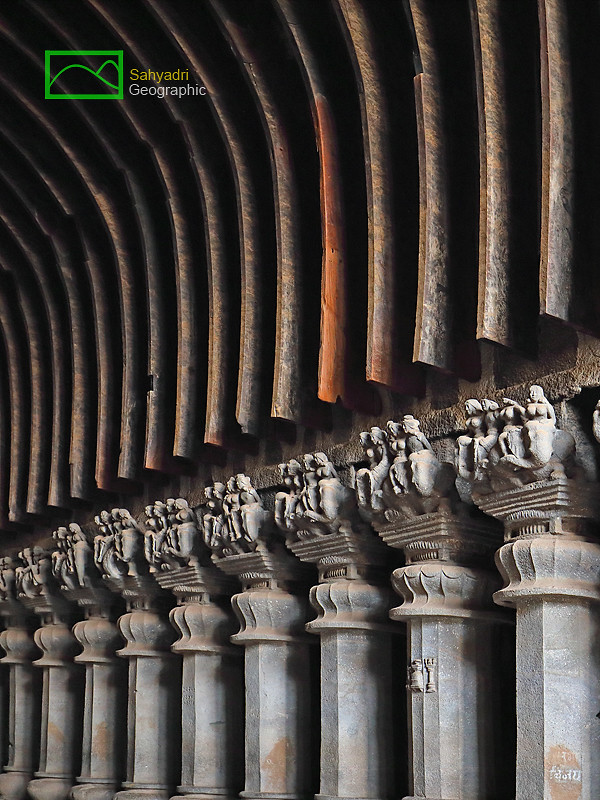 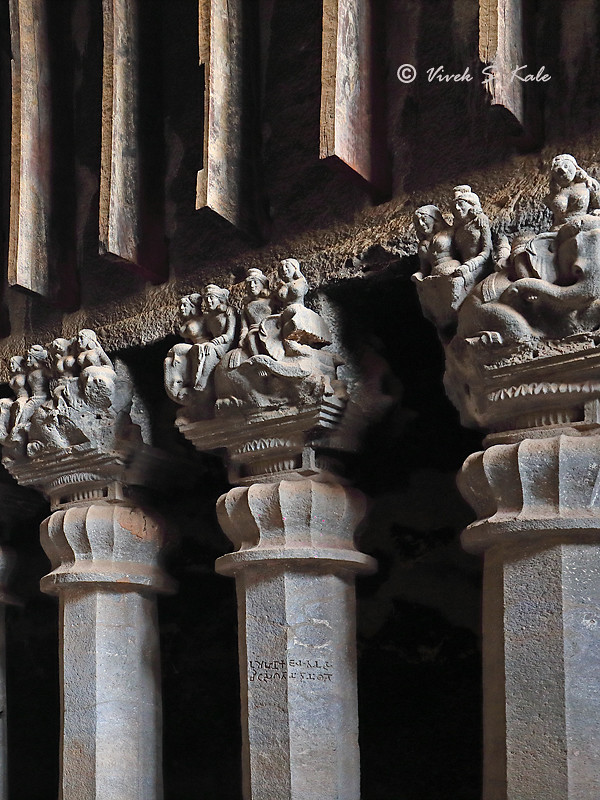 |
| |
| 16. Pillars with Capitals, Karle Chaityagriha, Maval Tehsil, Pune district, Maharashtra, India |
| |
|
|
चैत्यगृहाचा आकार ३७.८ मीटर लांब, १३.९ मीटर रुंद, १४ मीटर उंच आहे. चैत्यगृहात १ स्तुप, ४१ खांब, २५ शिलालेख, 30 खांबांवर प्राण्यांवर आरुढ झालेल्या स्त्री-पुरुषांची शिल्प आहेत. चैत्य हा शब्द चिता या शब्दावरुन घेतला असावा. पुजेसाठी तयार केलेल्या या स्मारक असलेल्या मंदिरांना चैत्यगृह असे म्हणतात.
|
|
The chaityagriha at Karle is the biggest of its type in the whole of India. The hall measures 37.87 m deep from door to back; 13.87 m wide and 14.02 m high. The interior of chaityagriha at Karle has total 1 stupa with hermika and wooden Chatri, 41 pillars, 25 inscriptions, several sculptures of men and women atop the pillars.
The word Chaitya is also derived from a root “chita” signifying “a funeral pile," hence meaning “a monument". These Chaityas or Dagobas are an essential feature of temples constructed solely for purposes of worship and which may therefore be appropriately called chaitya caves.
|
|
|
| |
 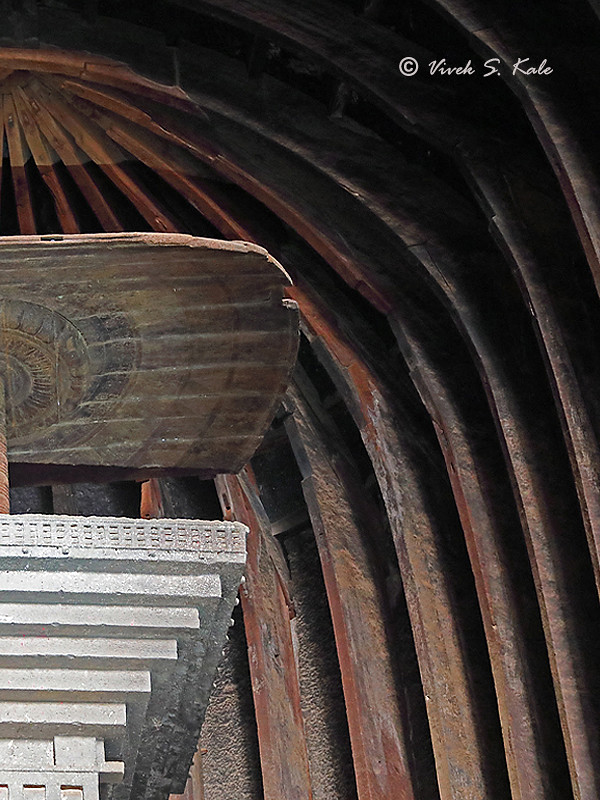 |
| |
| 17. Chatri over Stupa , Karle Caves, Pune district, Maharashtra, India |
| |
|
|
स्तुप: भगवान गौतम बुद्धां चे अवशेष भगवान गौतम बुद्धांच्या जीवनातील महत्वाच्या घटनांशी संबंधित स्थळांवर बांधलेल्या स्तूपांमध्ये दफन करण्यात आले होते. लुंबिनी (जिथे त्याचा जन्म झाला), बोध गया (सारग्रथा मिळवलेल्या), सारनाथ येथे हिरण पार्क (जेथे धर्म उपदेश केला) आणि कुशींगरा (निर्वाणस्थान), या स्थानांची निवड वास्तविक आणि कल्पित दोन्ही घटनांवर आधारित होती.
स्तुप, म्हणजे "ढीग करणे," "बांधणे". भगवान गौतम बुद्धांच्या कोणत्याही पवित्र अवशेषांवर उभारण्यात आलेल्या स्मारकास स्तुप शब्द लागू केला गेला. बुद्धांच्या जीवनातील महत्वाच्या घटनांशी संबंधित स्थानांवर स्तूप स्मारक म्हणुन तयार करण्यात आले. स्तुपाकडे पाहुन बौद्ध अनुयायाला, भगवान गौतम बुद्धांची आणि त्यांच्या शिकवणींची आठवण, तब्बल २५०० वर्षांनंतर होते. |
|
Stupa: The relics of the Buddha were buried in stupas built at locations associated with important events in the Buddha’s life including Lumbini (where he was born), Bodh Gaya (where he achieved Enlightenment), Deer Park at Sarnath (where he preached his first sermon sharing the Four Noble Truths (also called the dharma), and Kushingara (where he died). These sites were based on both real and legendary events. Stupa , from a Sanskrit meaning " to heap," "to erect," is applied to any pile or mound, as to a funeral pile. It is applied to a tumulus erected over any of the event monuments.
Stupas remind the Buddhist practitioner of the Buddha and his teachings almost 2,500 years after Buddha.
|
|
|
| |
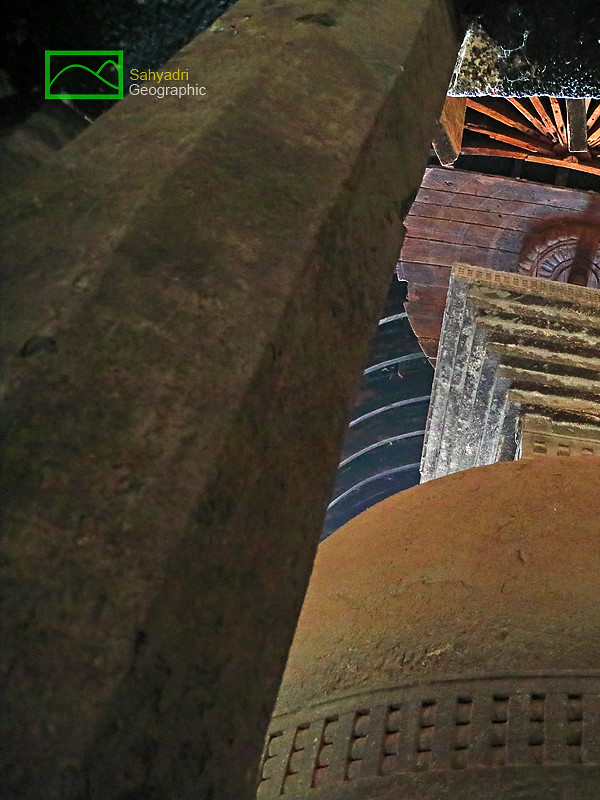 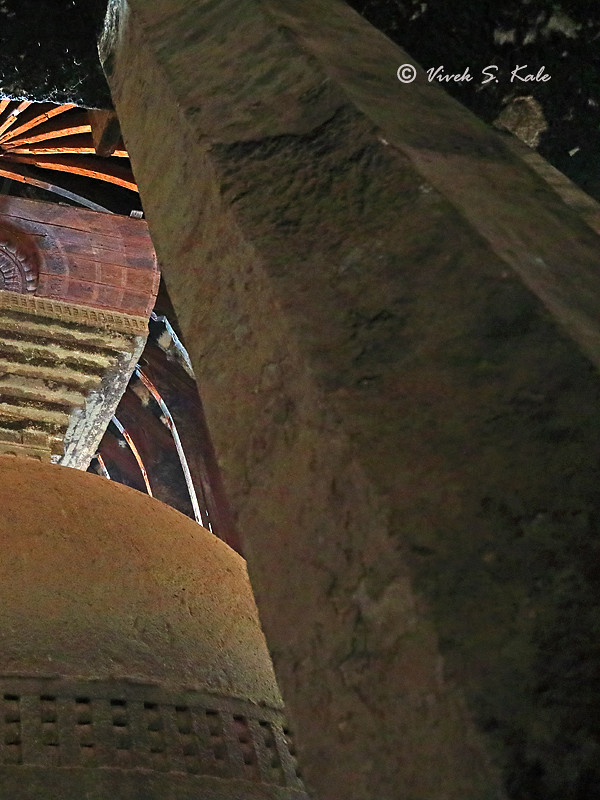 |
| |
| 18. Chatri over Stupa , Karle Caves, Pune district, Maharashtra, India |
| |
|
|
| |
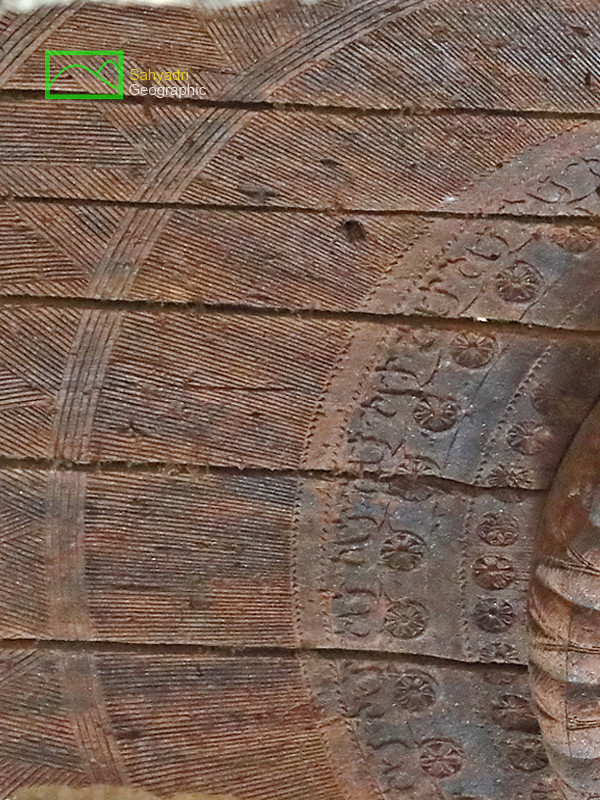 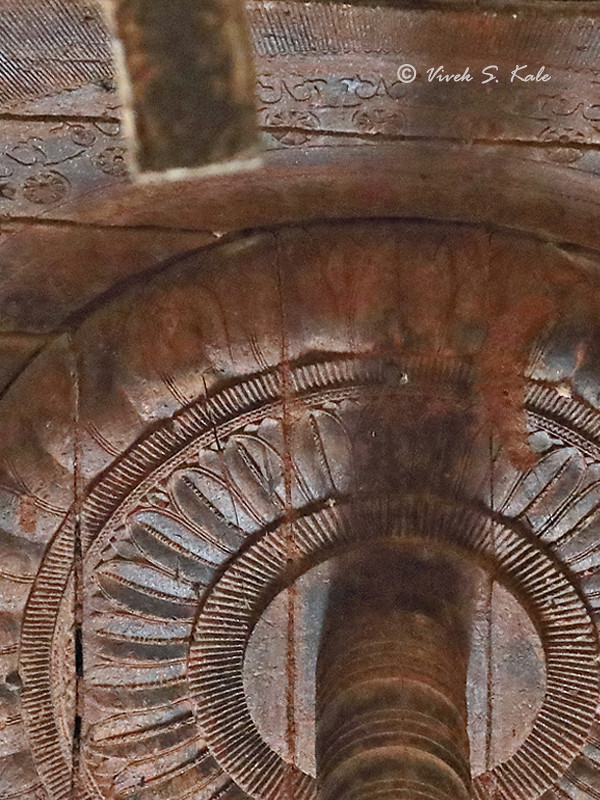 |
| |
| 19. Chatri over Stupa , Karle Caves, Pune district, Maharashtra, India |
| |
|
|
कार्ले लेण्यातील छत्री लाकडाची आहे. लहान लाकडी फळ्या वापरुन मोठया फळ्या जोडुन याची निर्मिती केली आहे. मुळ छत्री पुर्ण गोल असावी. छत्रीवर गोलाकार नक्षी आहे. यावर त्रिरत्न, कमळ फुल, रेघा यांचे अप्रतिम नाजुक नक्षीकाम दिसते. त्रिरत्न चिन्ह बुद्ध स्मारकांमध्ये दिसुन येते. बुद्ध, धर्म, संघ या तीन महत्वाच्या घटकांबद्दल त्रिरत्न चिन्ह जाणीव करुन देते.
छत्रीच्या लाकडी यष्टीवर कोरिव काम केलेले दिसते. छत्रीवर रेघांचे कोरिव काम केले आहे. यात तिरप्या रेघा वापरुन केलेले कोरिव काम अप्रतिम आहे. त्रिरत्न चिन्हांच्या मधील वर्तुळात ८ पाकळ्यांच्या कमळ फुलांचे नक्षीकाम केले आहे. छत्रीच्या मध्यभागी असलेल्या भागावर मोठया कमळाच्या पाकळ्यांचे कोरिव काम केलेले दिसते. यावरुन त्या काळात दगडावर जसे कोरिव काम केले जात होते तेव्हढेच सुंदर कोरिव काम लाकडावर केले जात होते हे दिसुन येते. २५०० वर्षांपुर्वी केलेले लाकडी कोरिव काम असलेली छत्री अद्भुत आहे.
|
|
The Chatri (Umbrelaa) over Stupa at Karle Chaityagriha, is a set of wooden planks connected by using the wooden inserts.
The wooden umbrella is carved on its lower surface which is a visible surface. The carved pattern has various symbols and patterns. The circular array of triratna symbols with lotus flower carved in the circle of triratna can be seen here. The Triratna symbol is often associated with three dharma wheels, the Buddha, the Dharma and the Sangha. This type of Triratna symbols can be seen at various Buddhist monuments such as Sanchi.
Apart from the Triratna symbols there is array of lotus flower symbols carved on the umbrella. The central lower wooden support of umbrella also has theme of lotus flower petals as can be seen in the photograph. There are radial carved lines on umbrella. Apart from the radial lines, there is a segment in which there are cross hash lines carved on the umbrelaa.
The shape of the umbrella seen today is not a full circle. It is a partial circular in size. The design in sketch when shown in the circle is only to indicate the design pattern.
|
|
|
| |
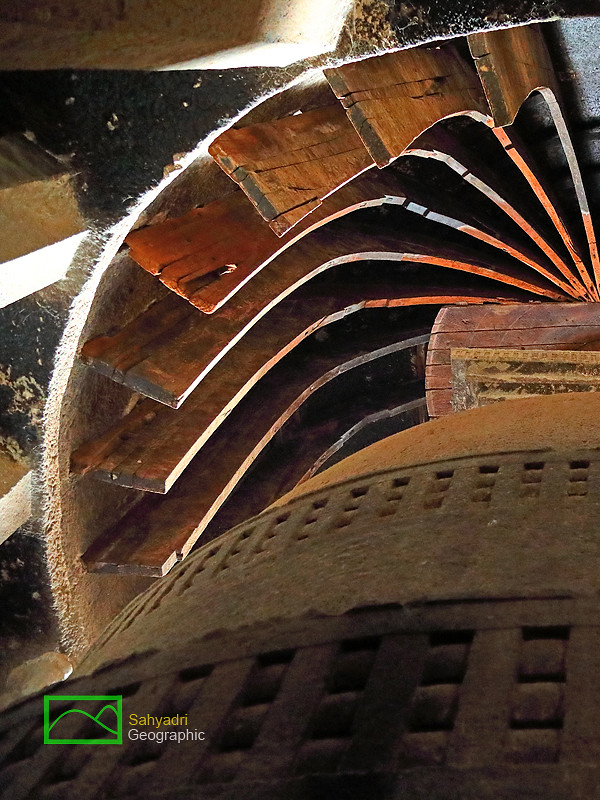 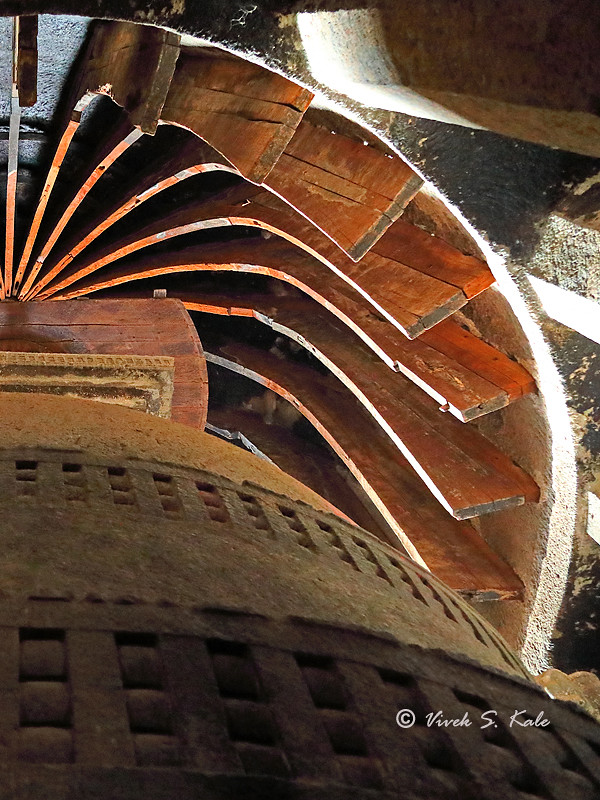 |
| |
| 20. Chatri over Stupa , Karle Caves, Pune district, Maharashtra, India |
| |
|
|
| |
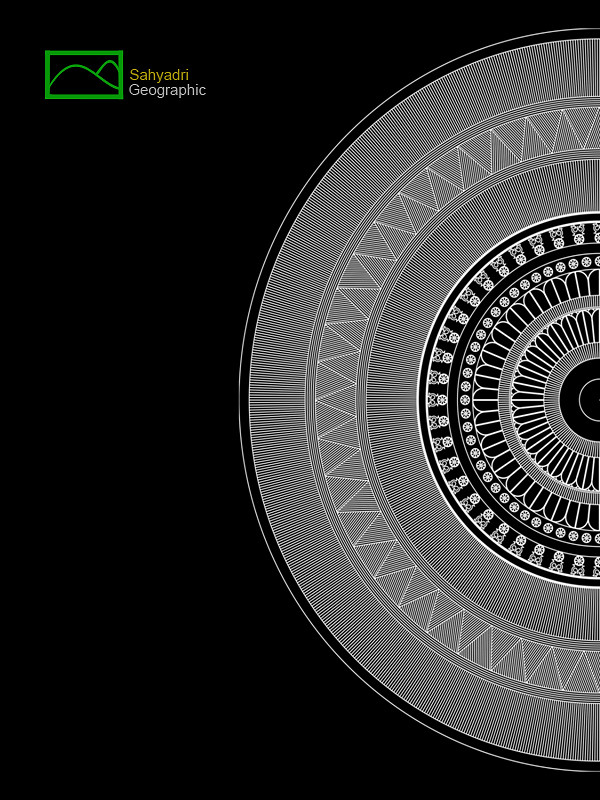 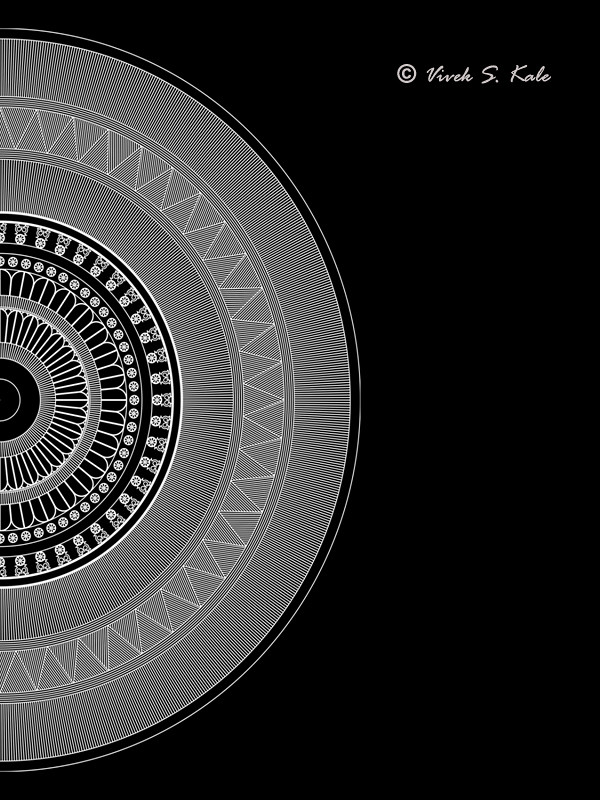 |
| |
| 21. Wooden carving design, Chatri over Stupa , Karle Caves, Pune district, Maharashtra, India |
| |
|
|
| |
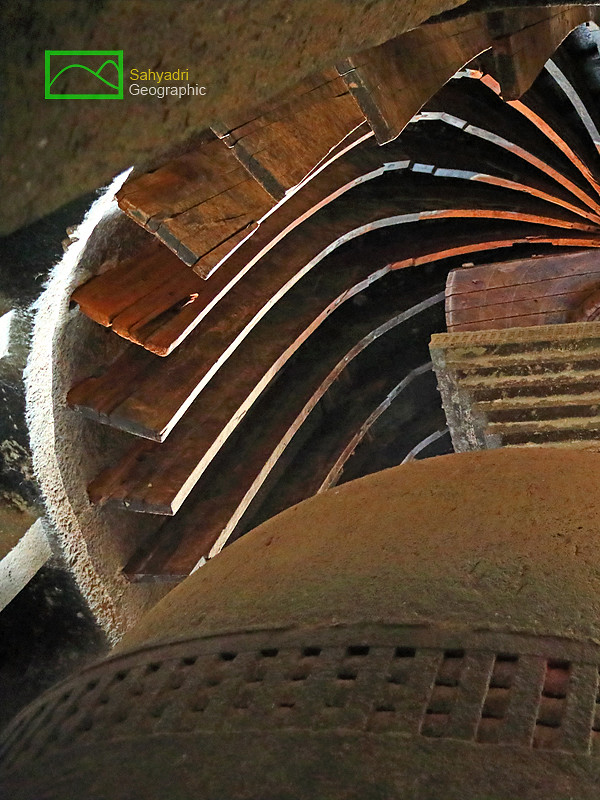 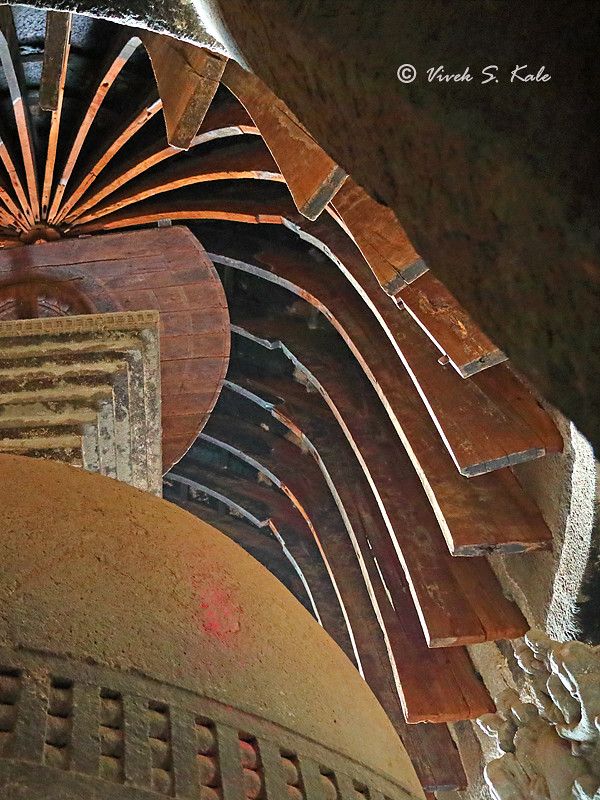 |
| |
| 22. Chatri over Stupa , Karle Caves, Pune district, Maharashtra, India |
| |
|
|
| |
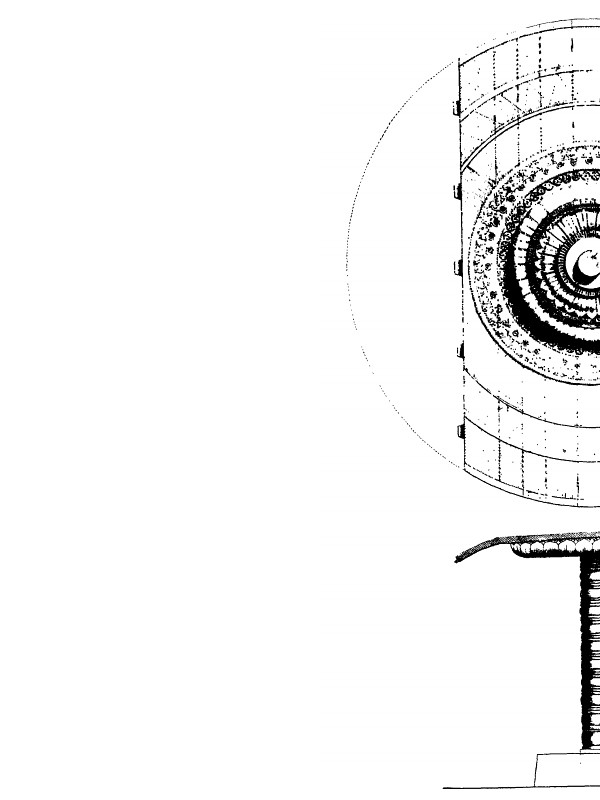 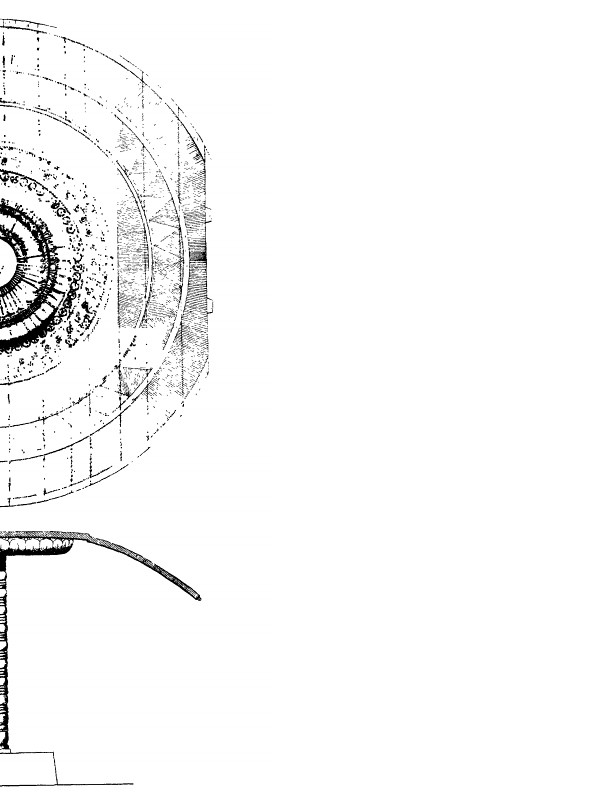 |
| |
| 23. Wooden carving design (Plate from the James Ferguson’s Caves temples of India), Chatri over Stupa , Karle Caves, Pune district, Maharashtra, India |
| |
|
|
| |
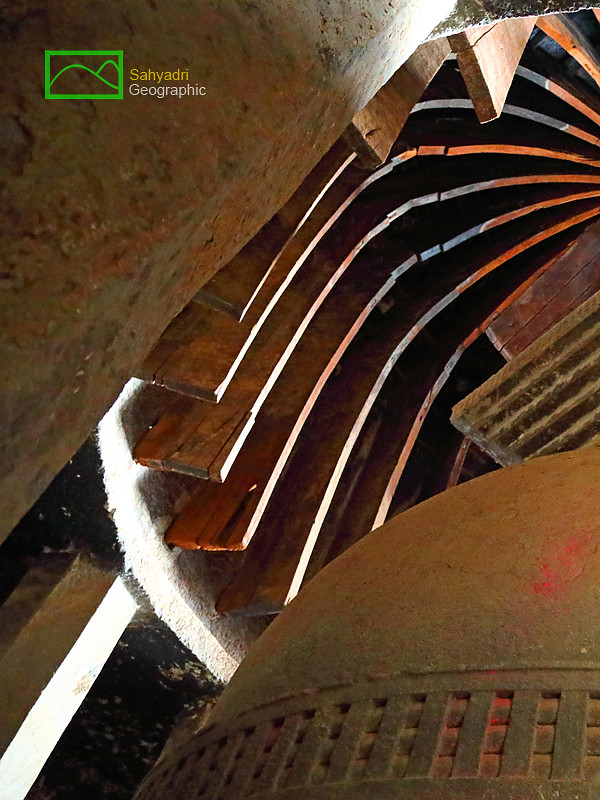  |
| |
| 24. Chatri over Stupa , Karle Caves, Pune district, Maharashtra, India |
| |
|
|
| |
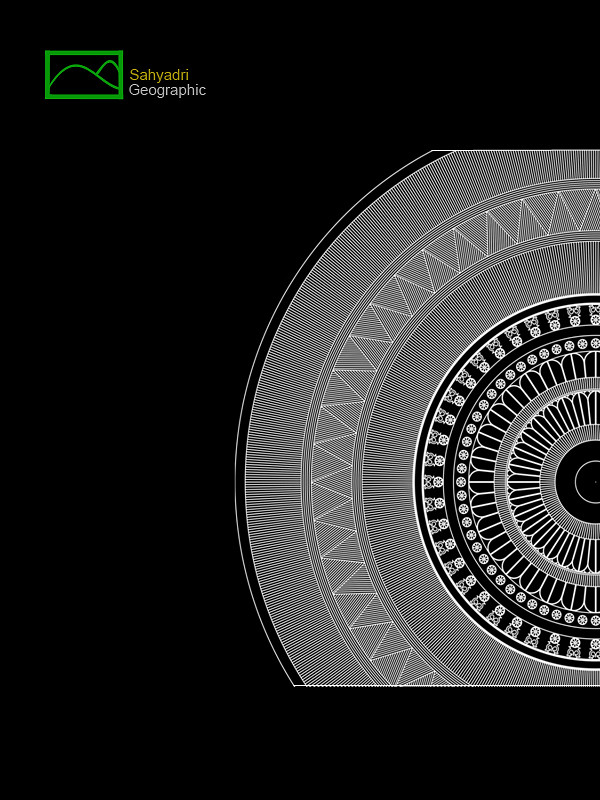 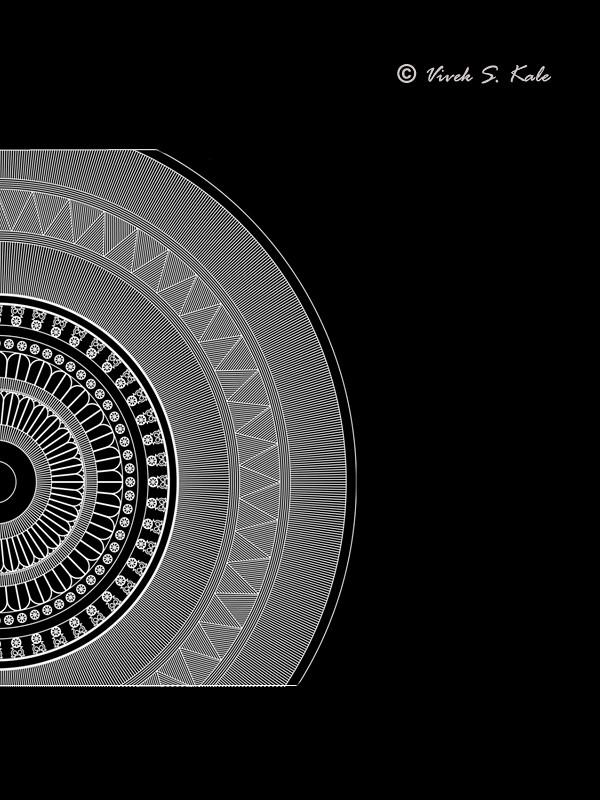 |
| |
| 25. Wooden carving design, Chatri over Stupa , Karle Caves, Pune district, Maharashtra, India |
| |
|
|
| |
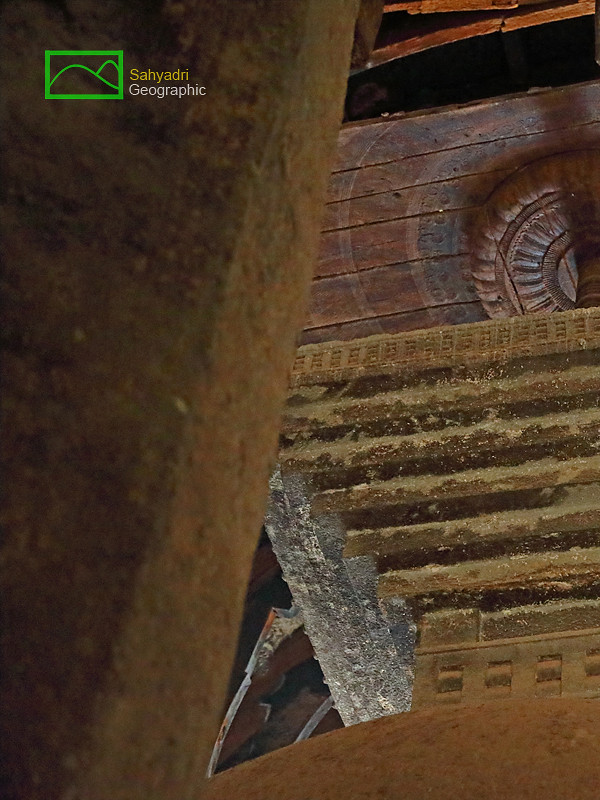 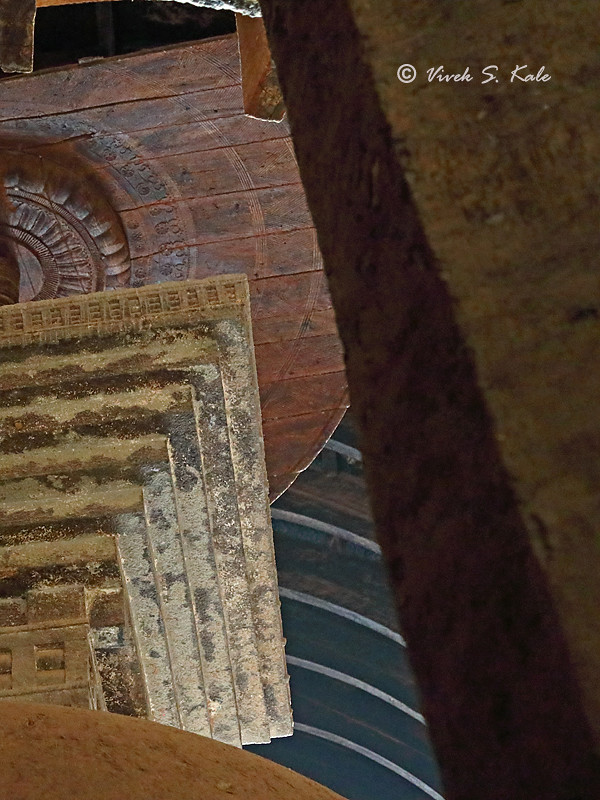 |
| |
| 26. Chatri over Stupa , Karle Caves, Pune district, Maharashtra, India |
| |
|
|
| |
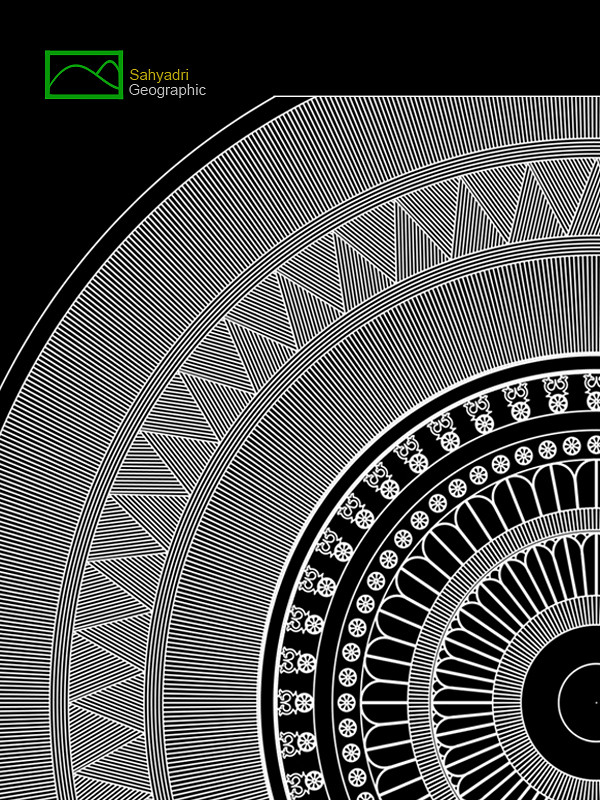 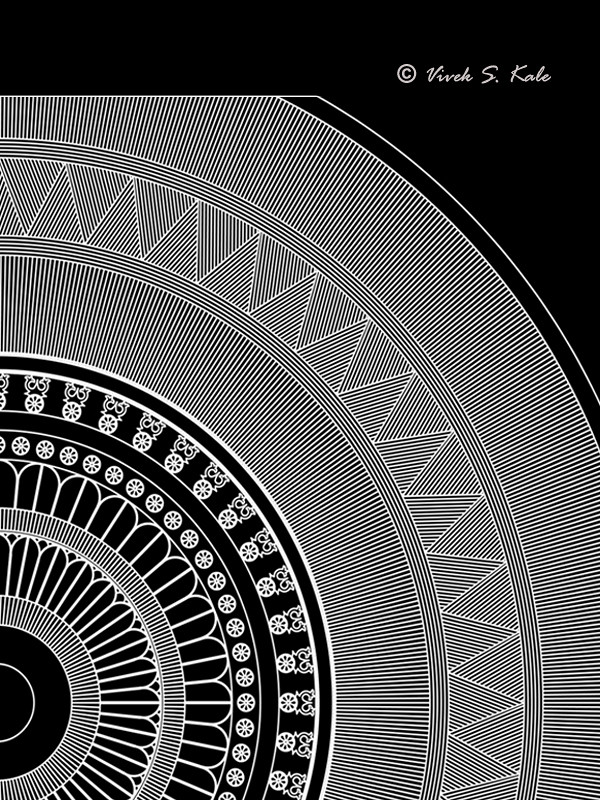 |
| |
| 27. Wooden carving design, Chatri over Stupa , Karle Caves, Pune district, Maharashtra, India |
| |
|
|
| |
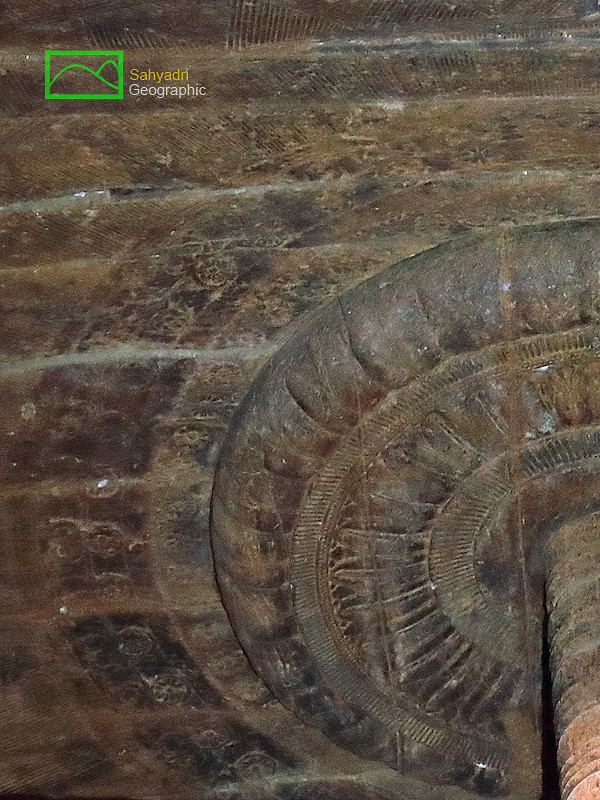 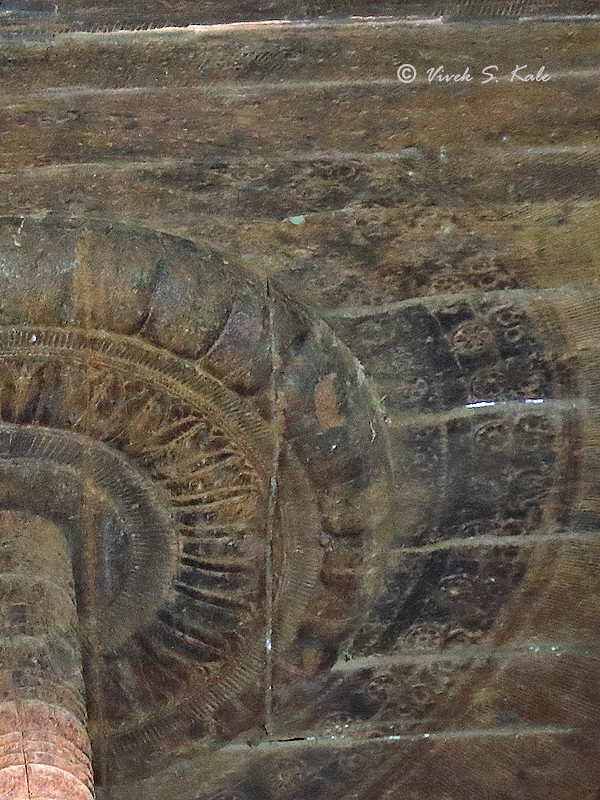 |
| |
| 28. Wooden carving design, Chatri over Stupa , Karle Caves, Pune district, Maharashtra, India |
| |
|
|
| |
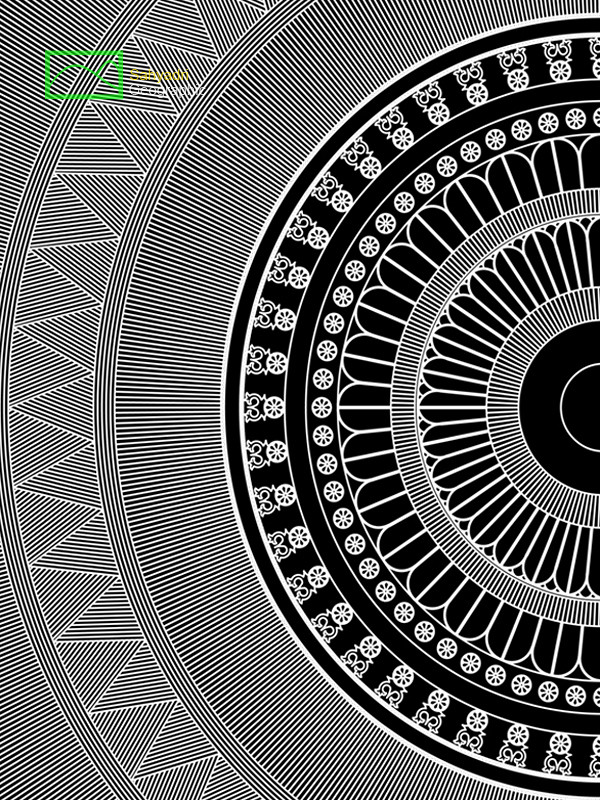 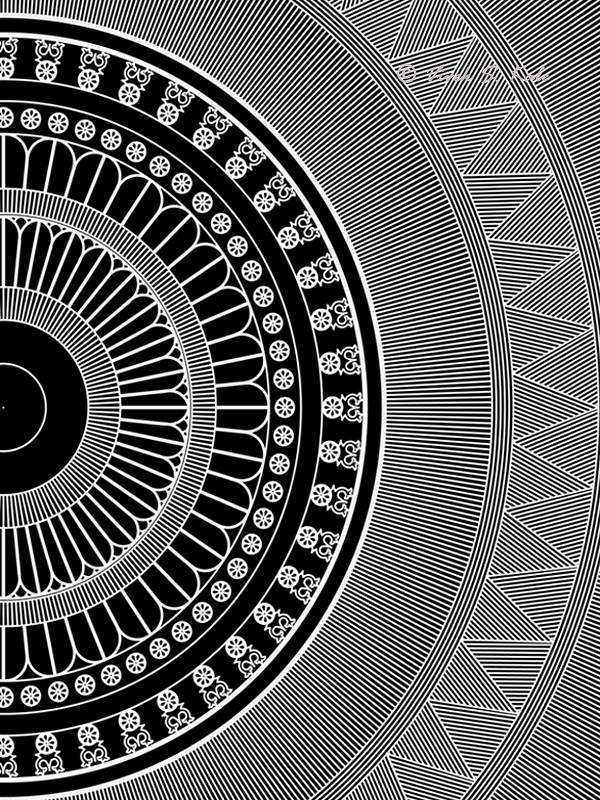 |
| |
| 29. Wooden carving design, Chatri over Stupa , Karle Caves, Pune district, Maharashtra, India |
| |
|
|
| |
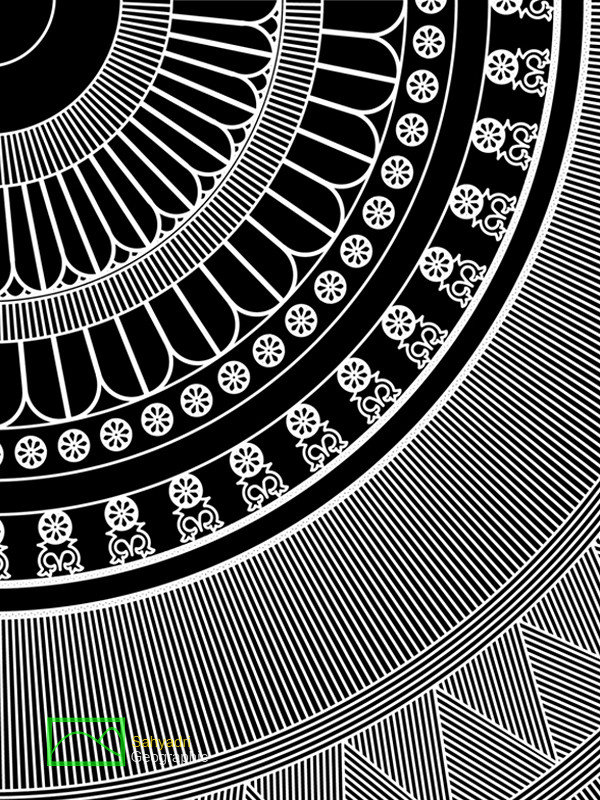 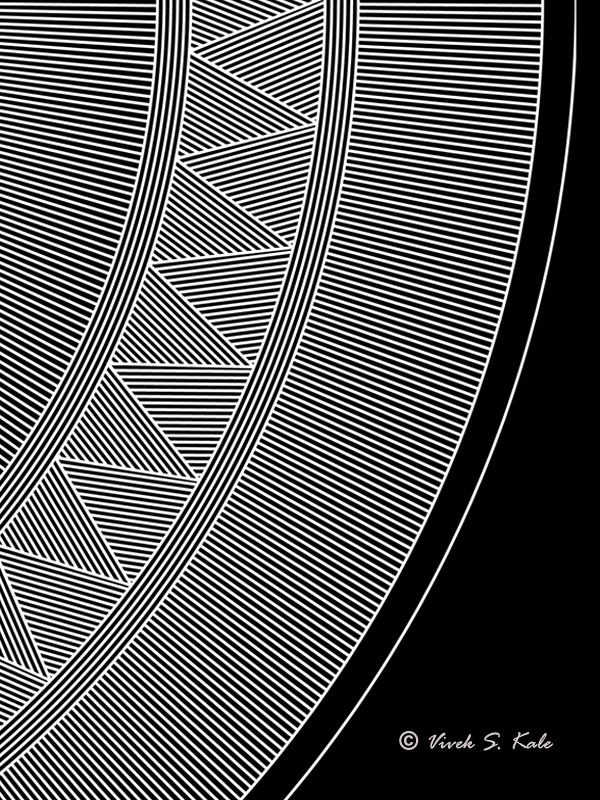 |
| |
| 30. Wooden carving design, Chatri over Stupa , Karle Caves, Pune district, Maharashtra, India |
| |
|
|
| |
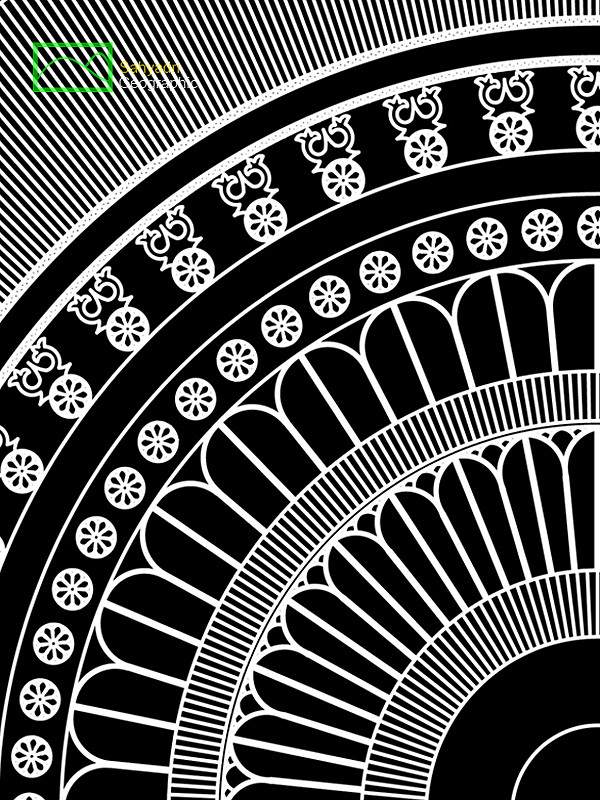 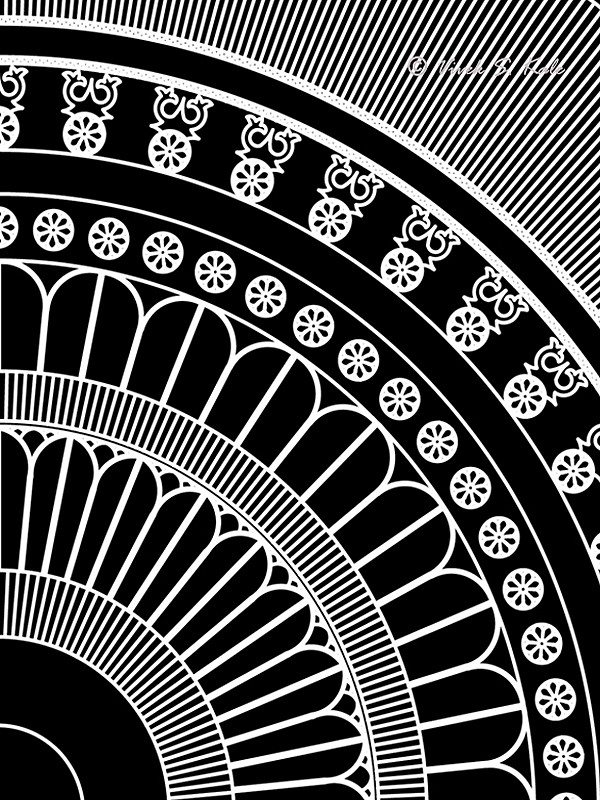 |
| |
| 31. Wooden carving design, Chatri over Stupa , Karle Caves, Pune district, Maharashtra, India |
| |
|
|
| |
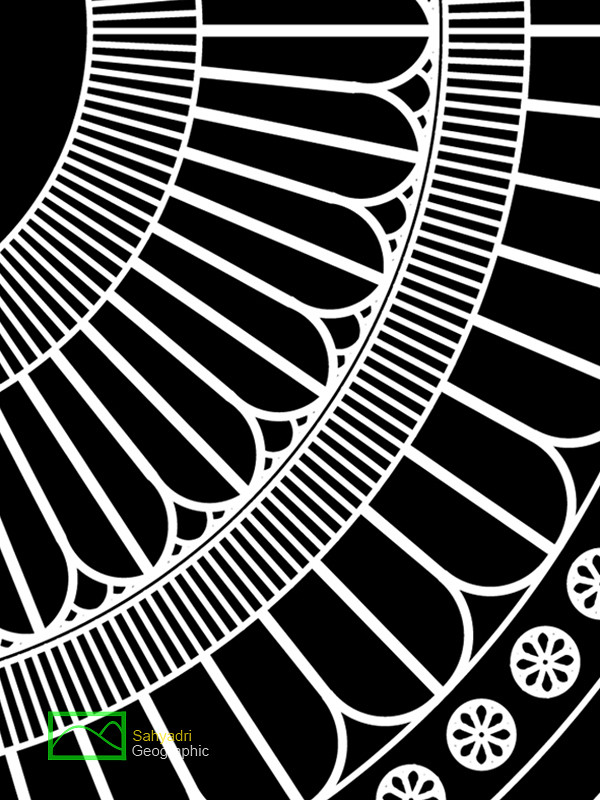 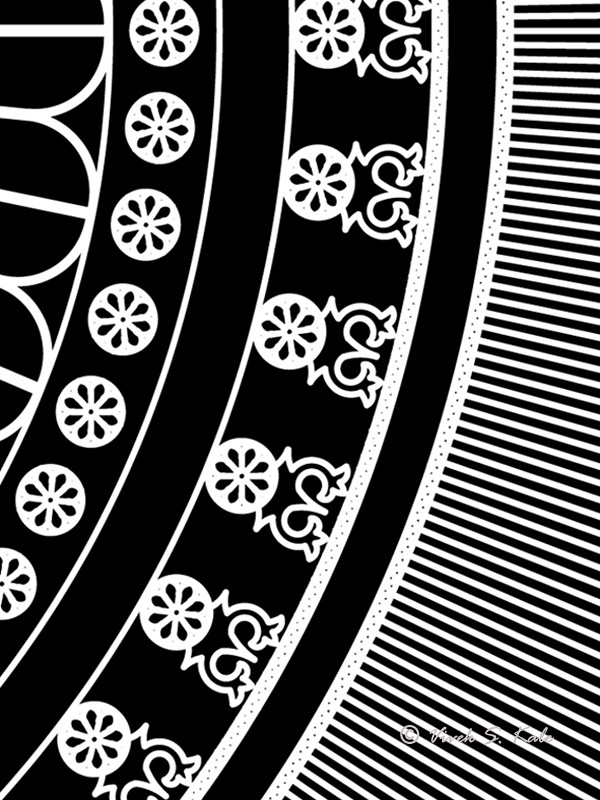 |
| |
| 32. Wooden carving design, Chatri over Stupa , Karle Caves, Pune district, Maharashtra, India |
| |
|
|
| |
|



































































